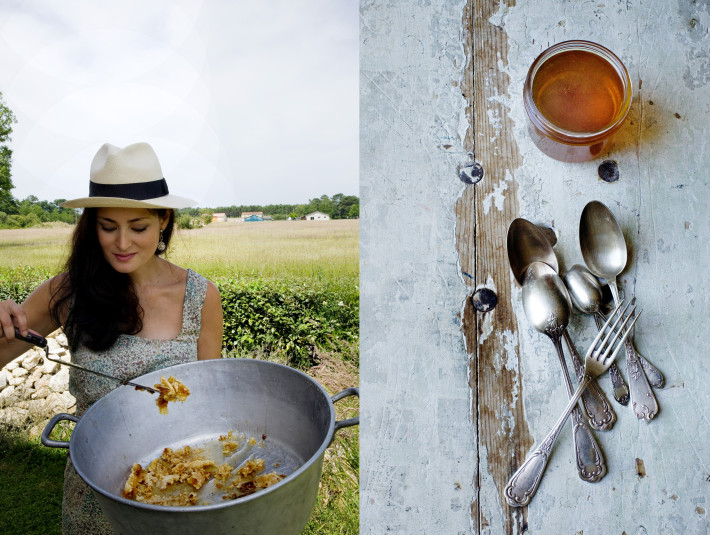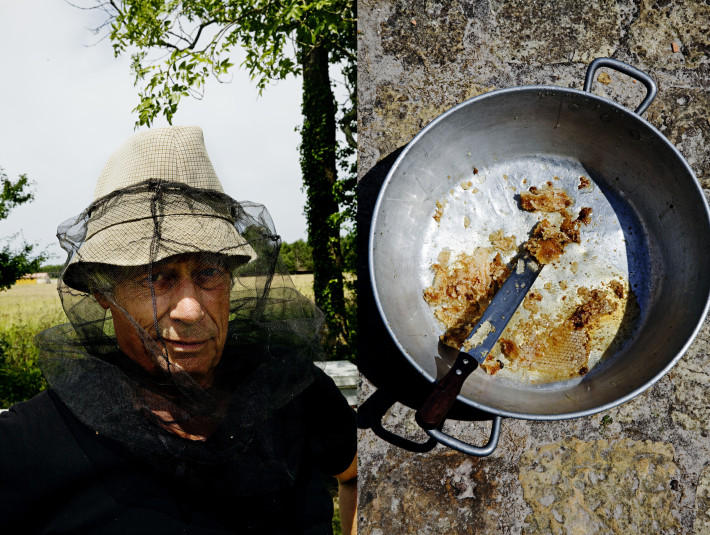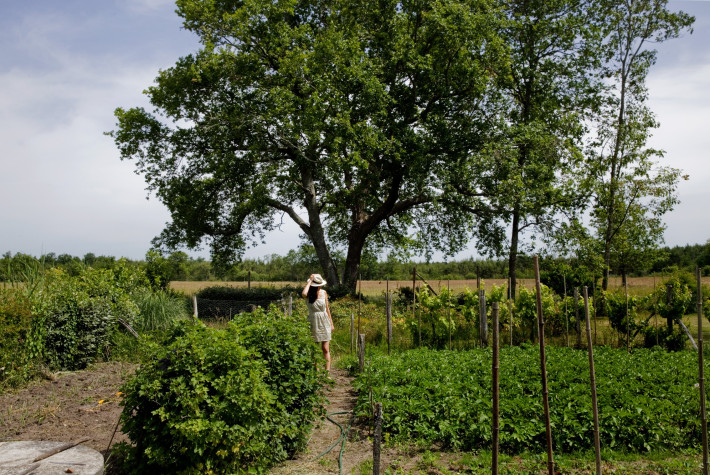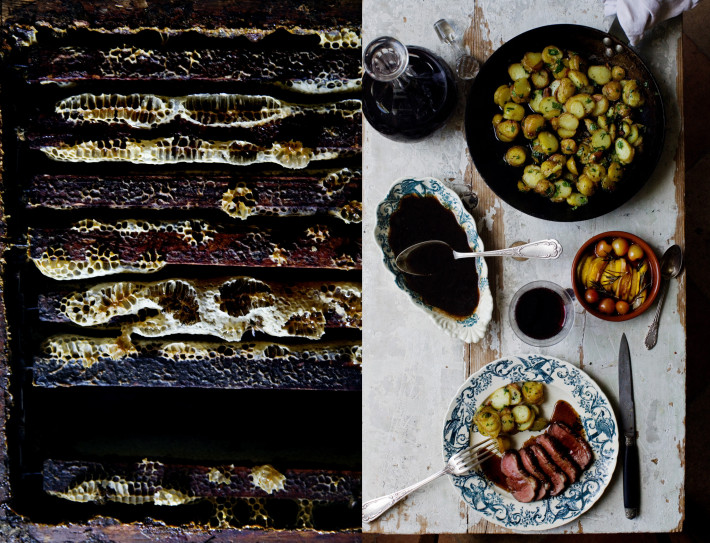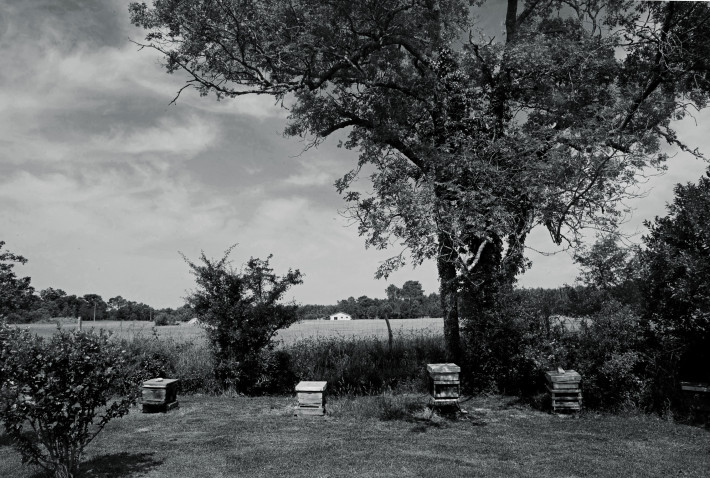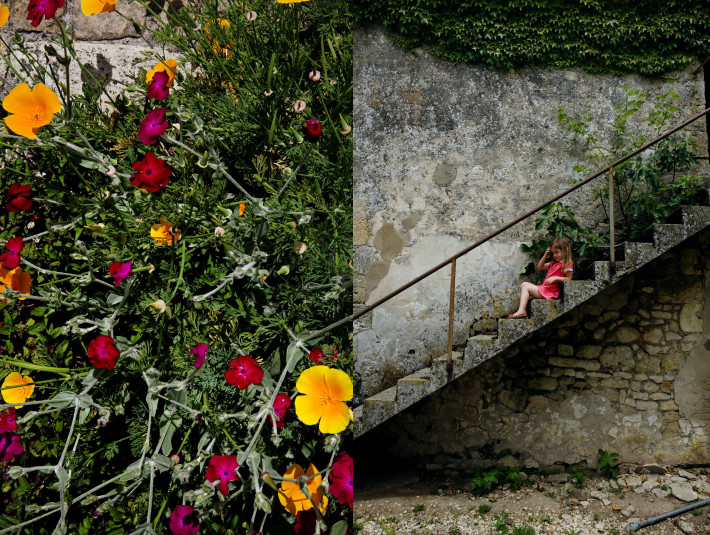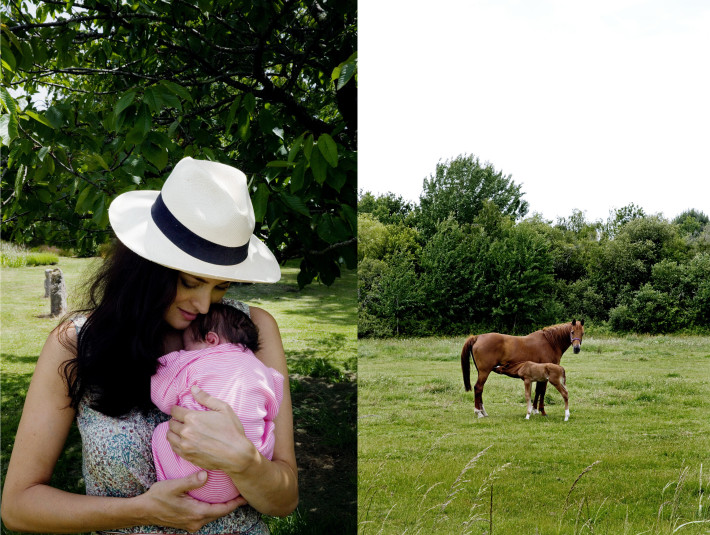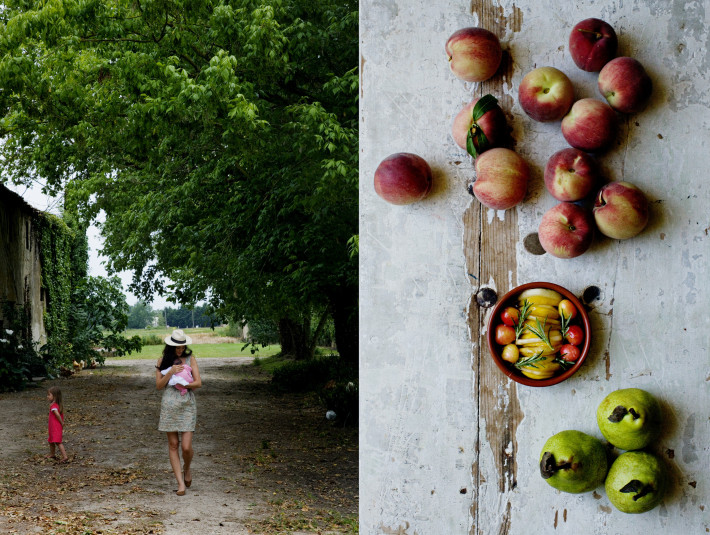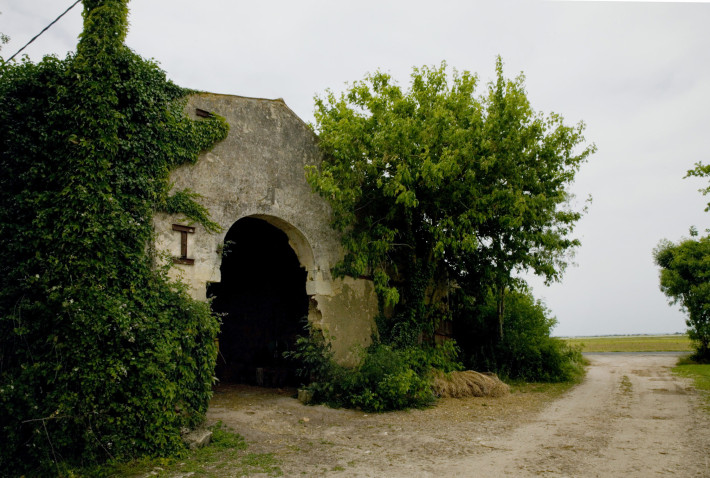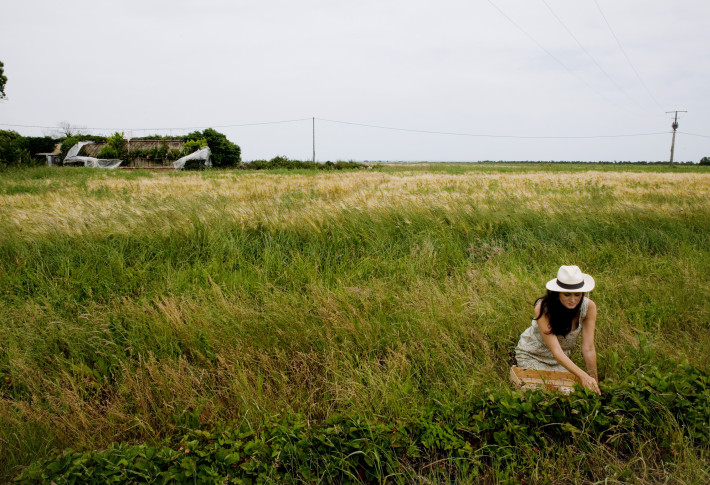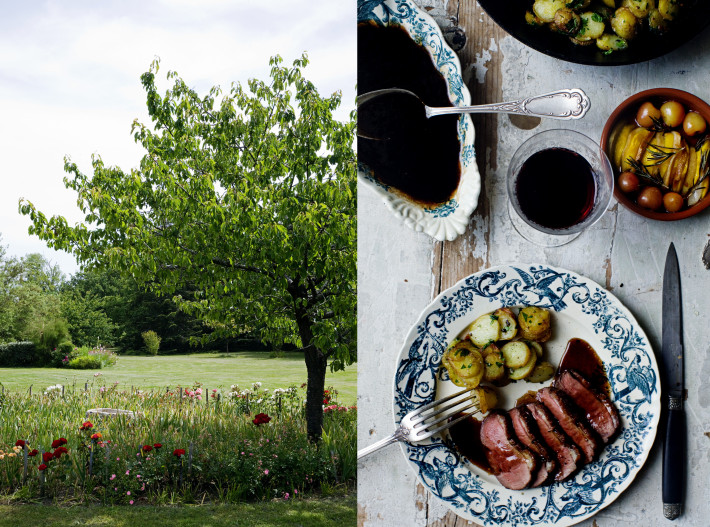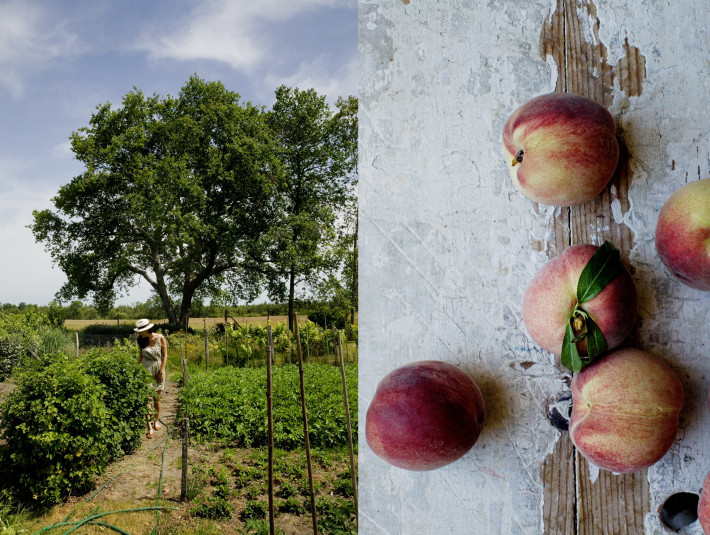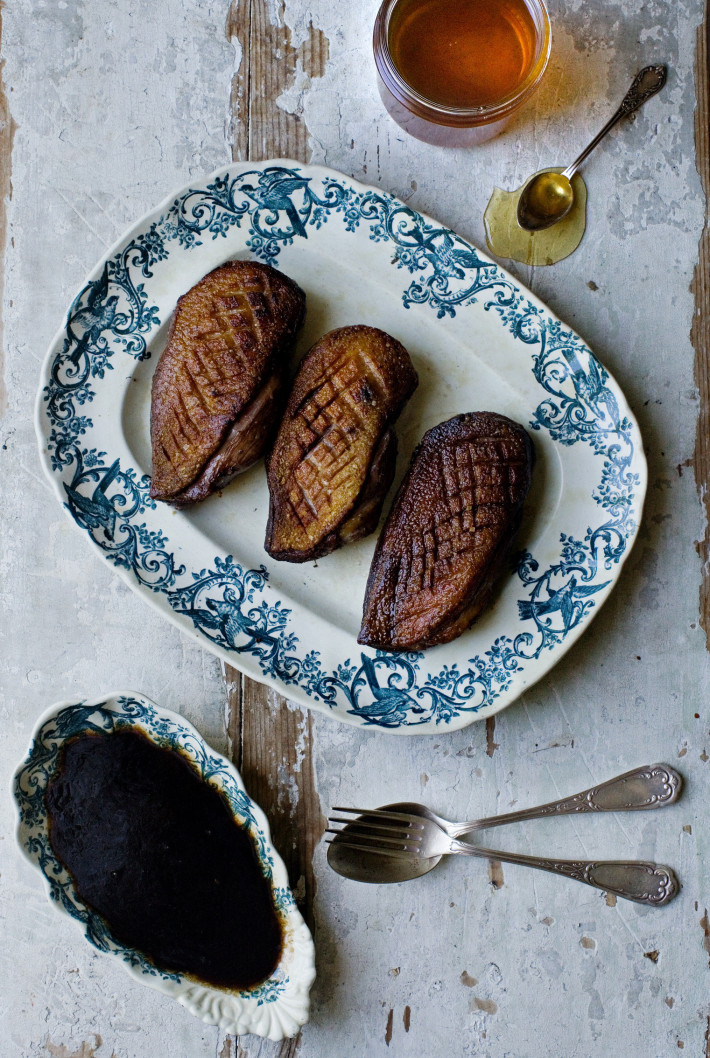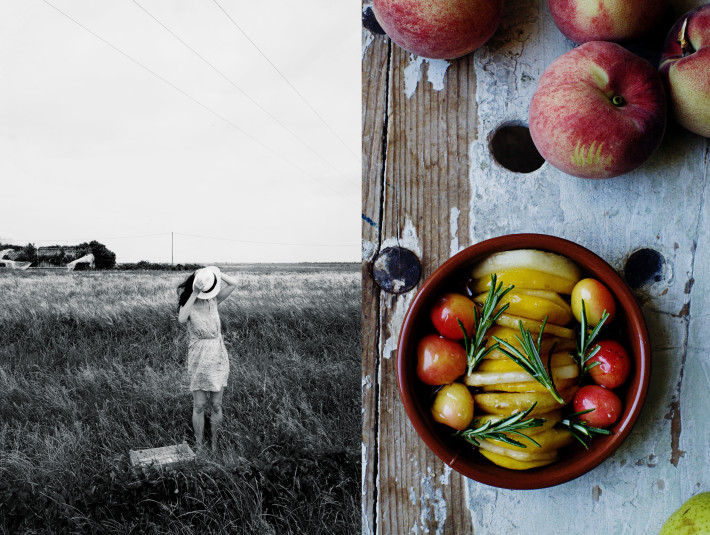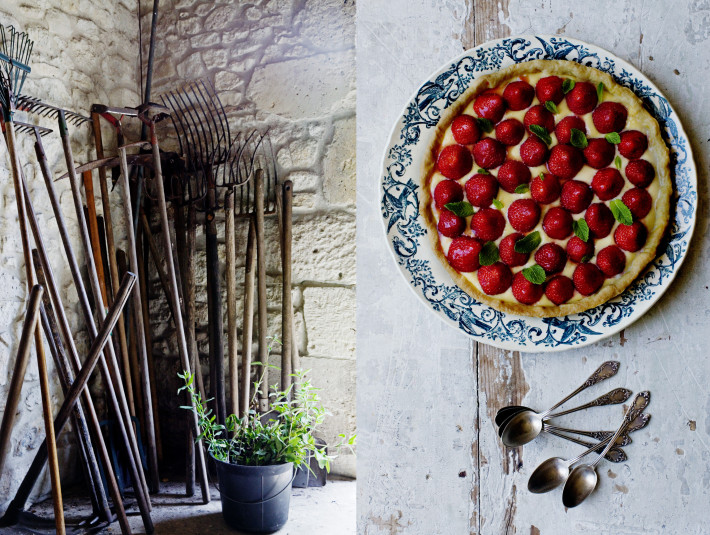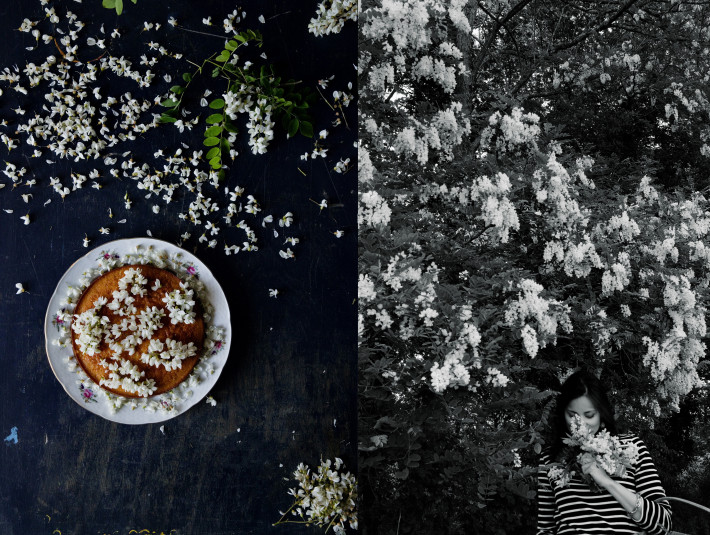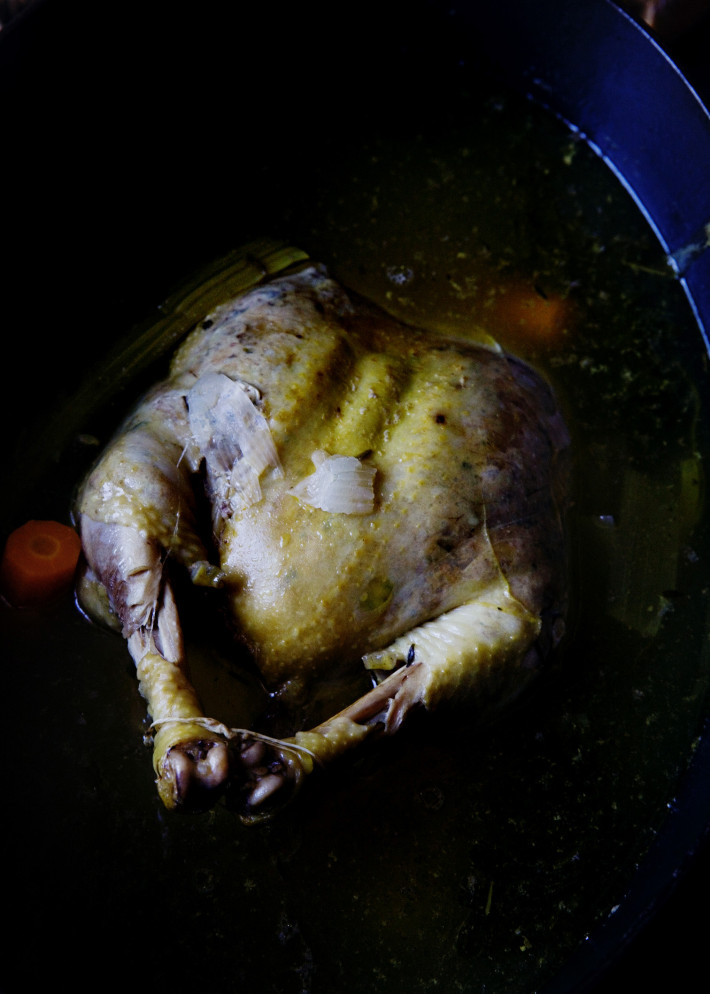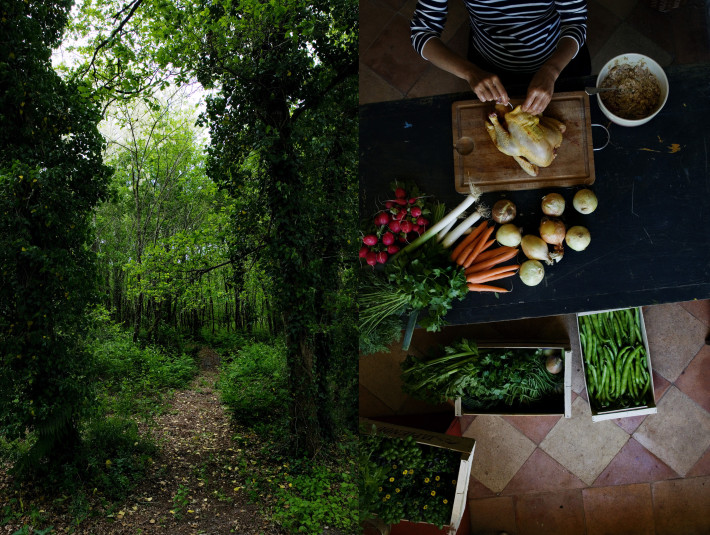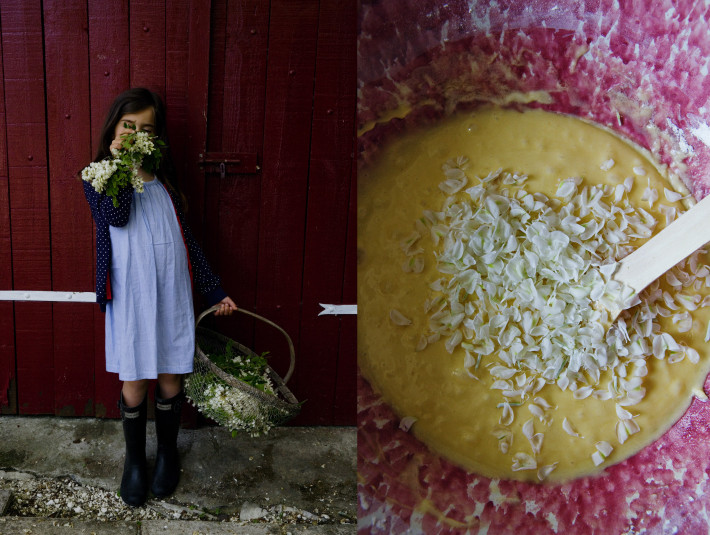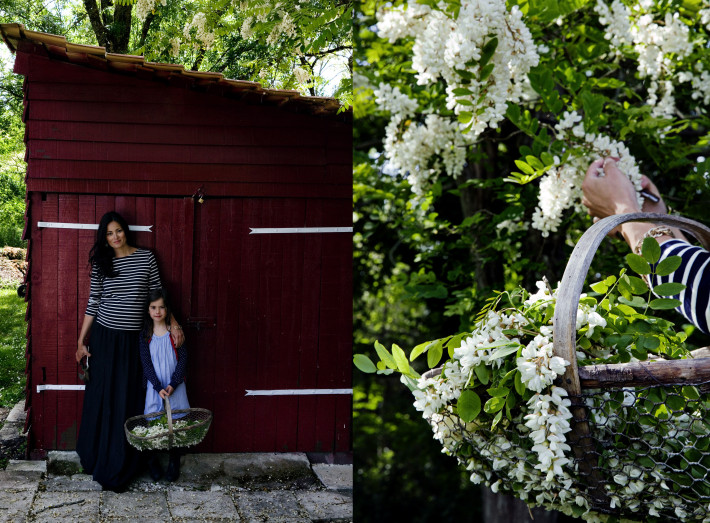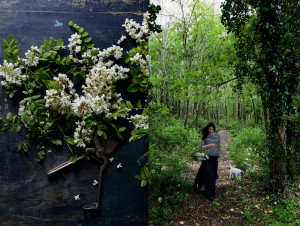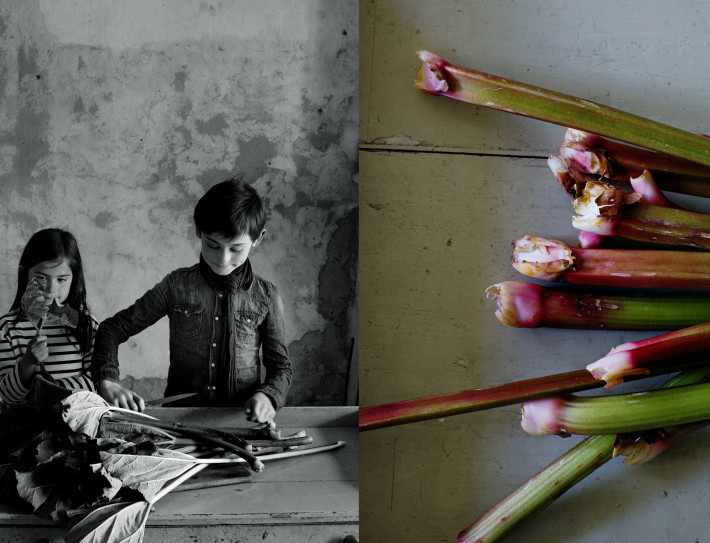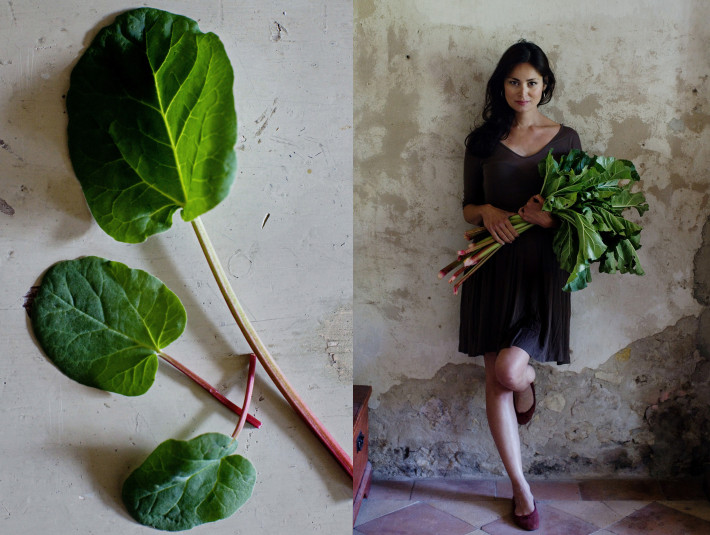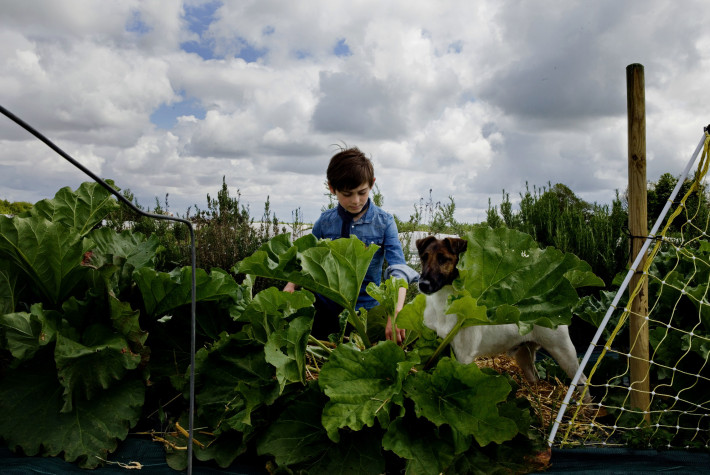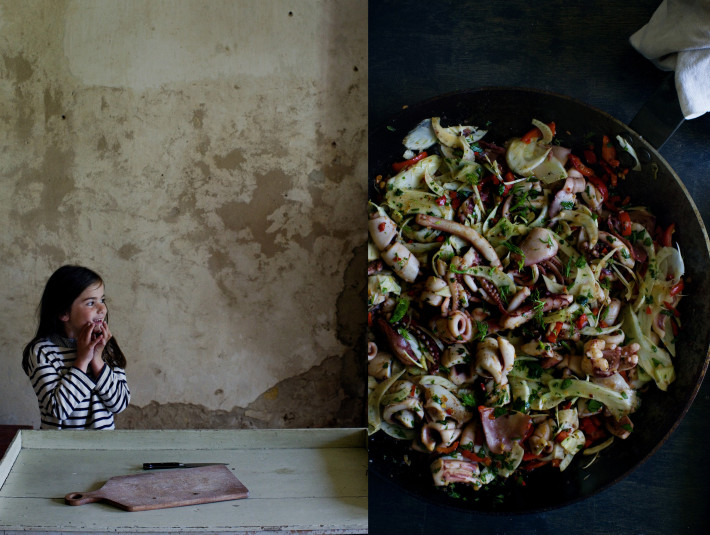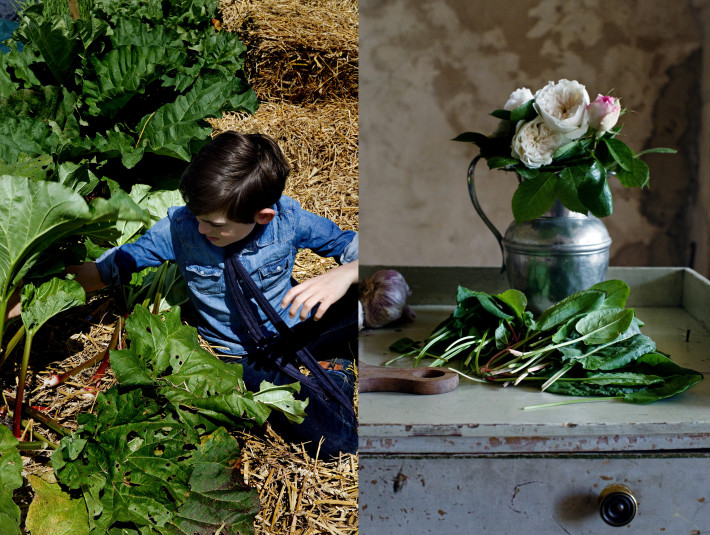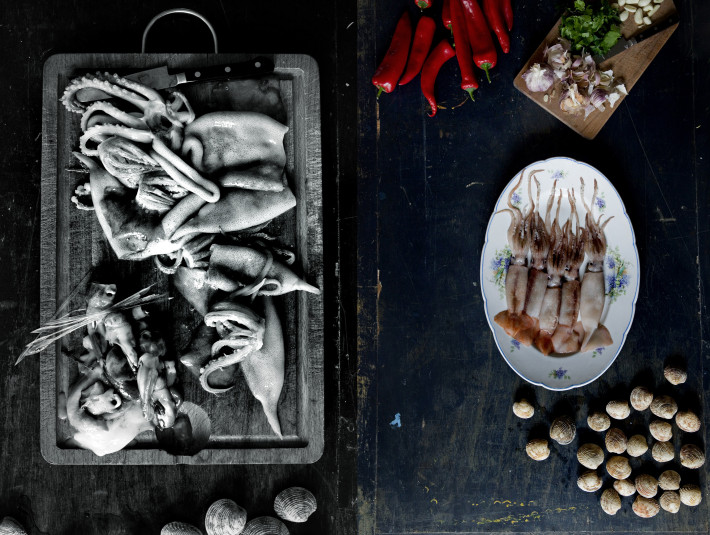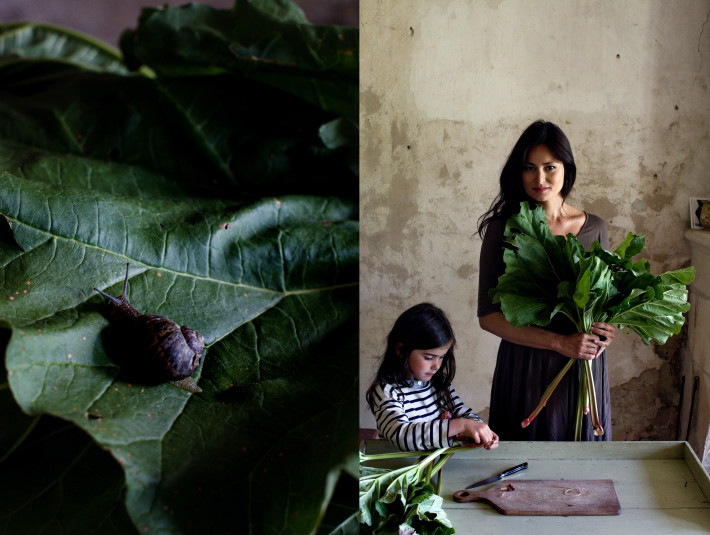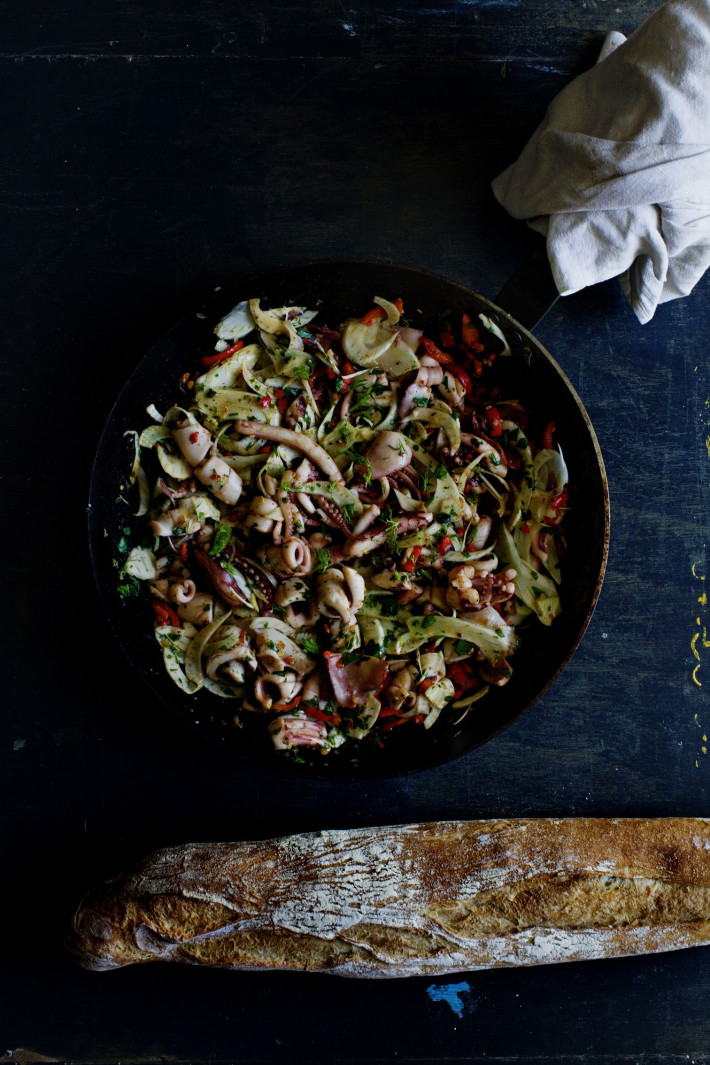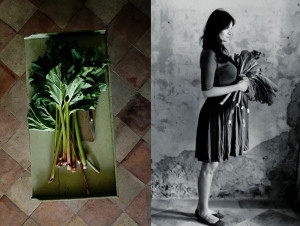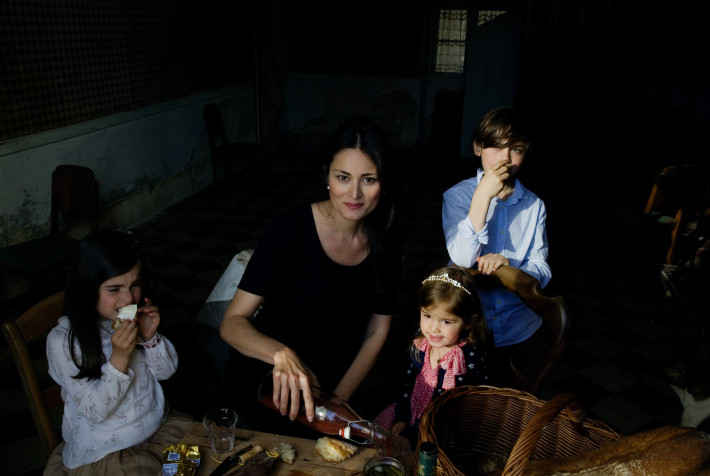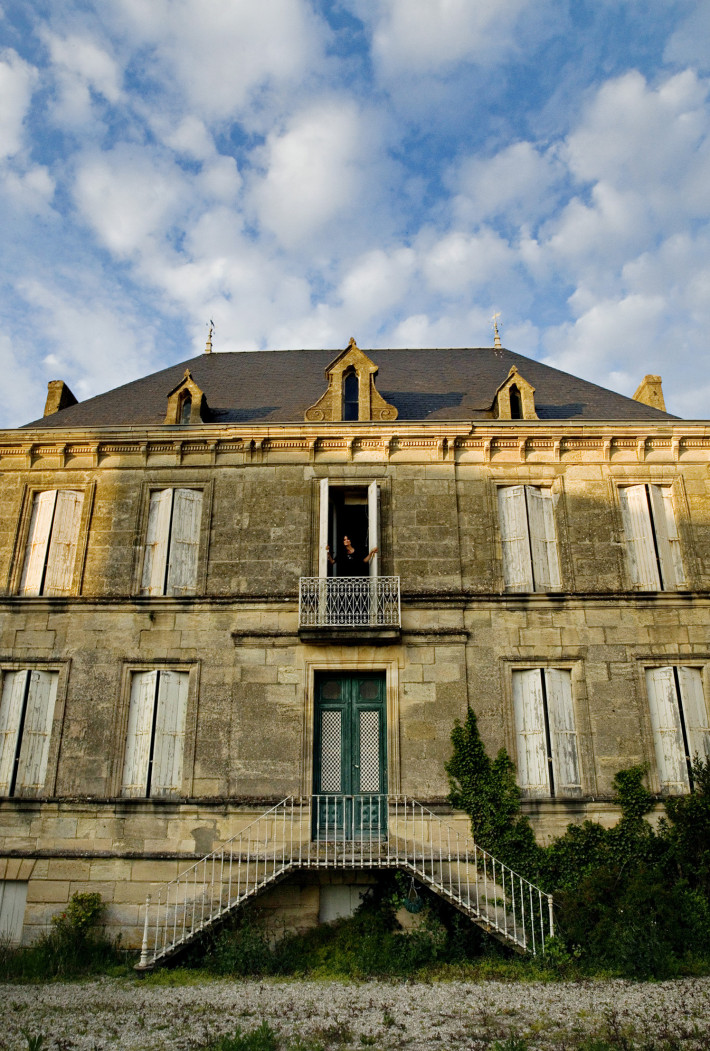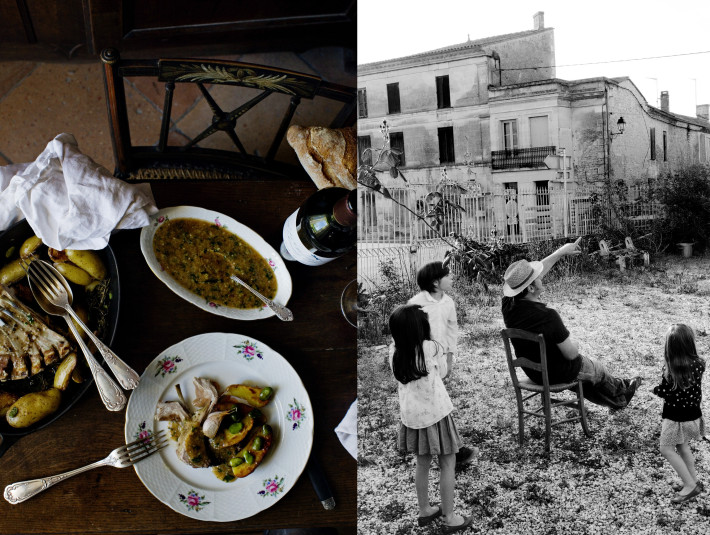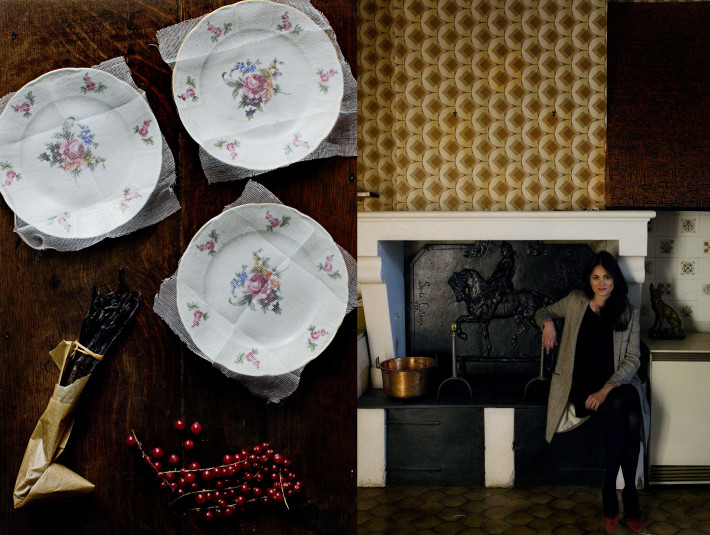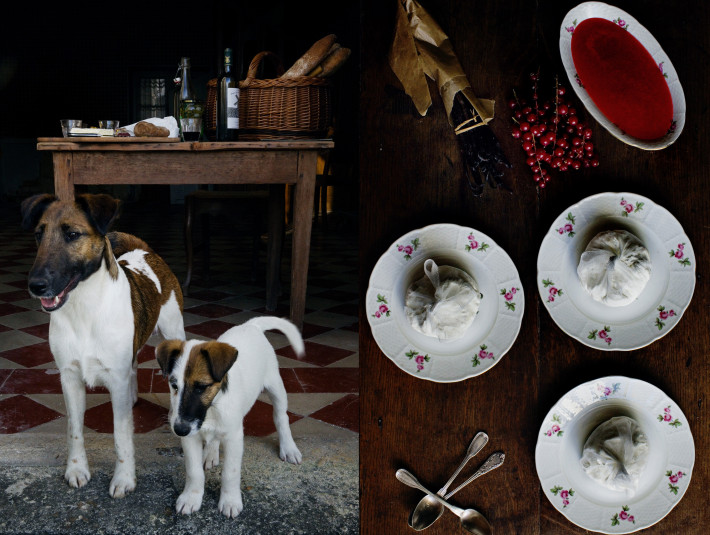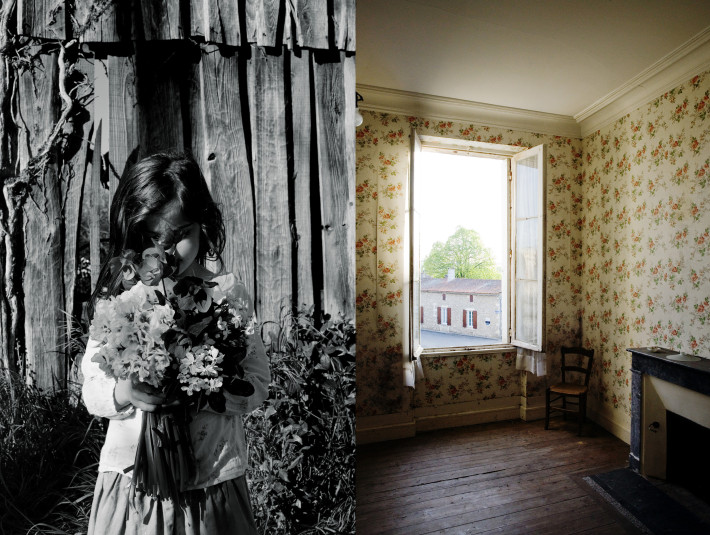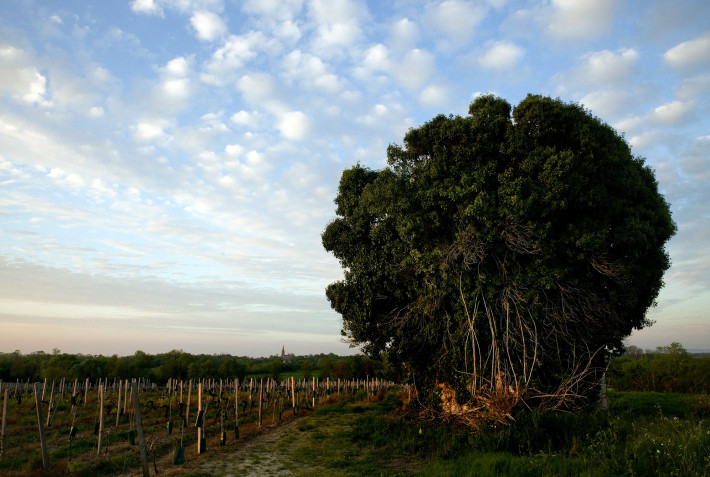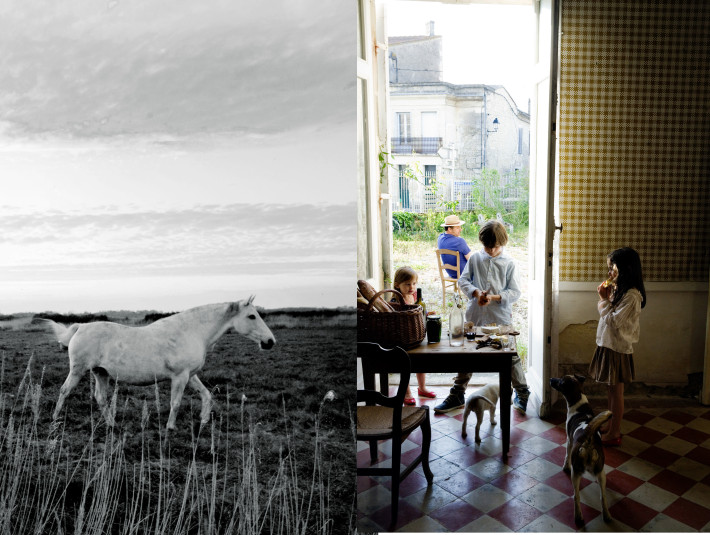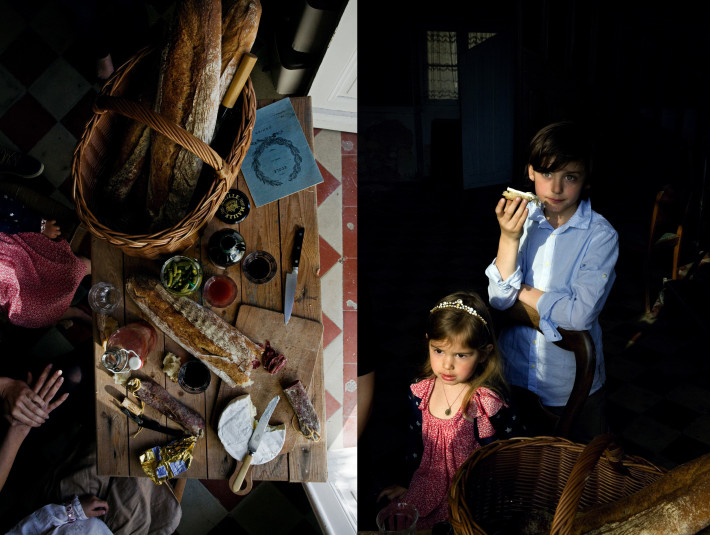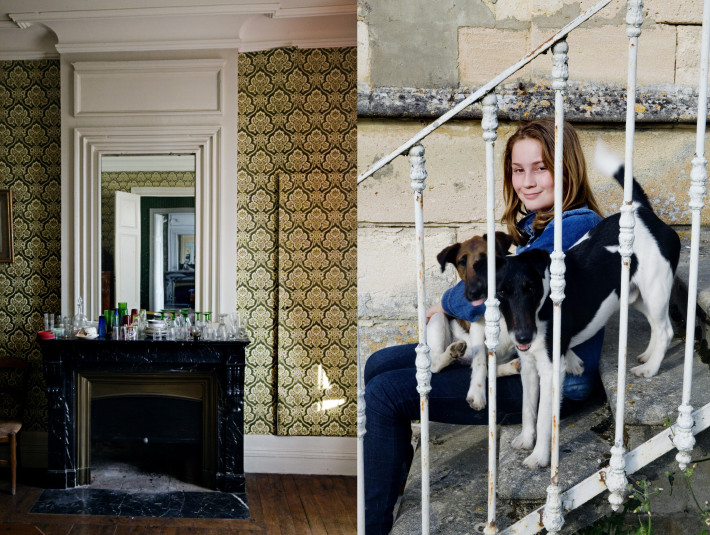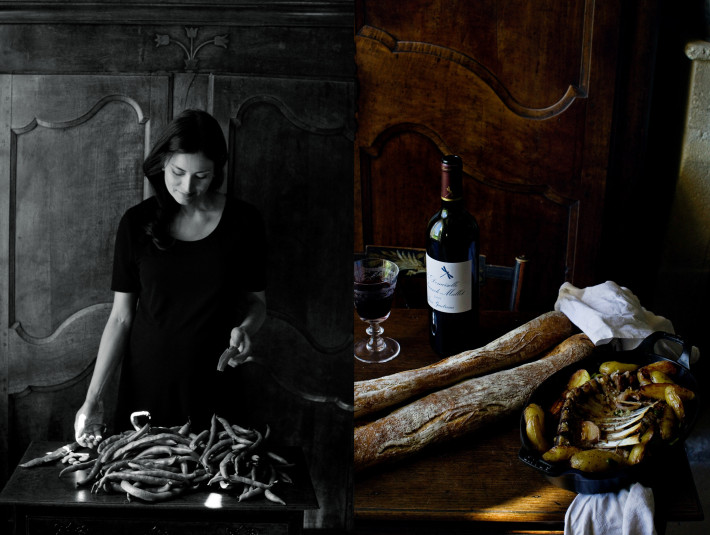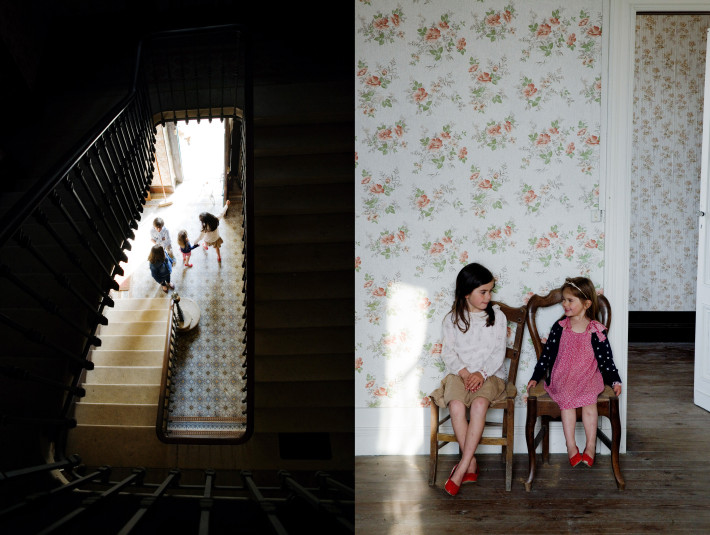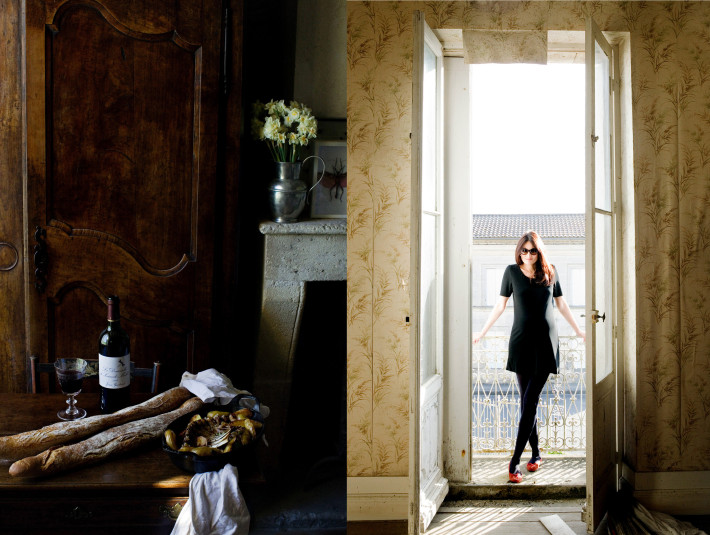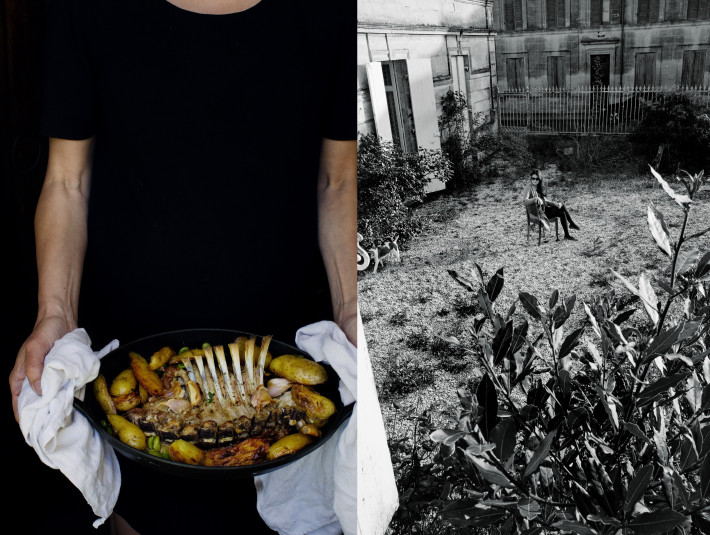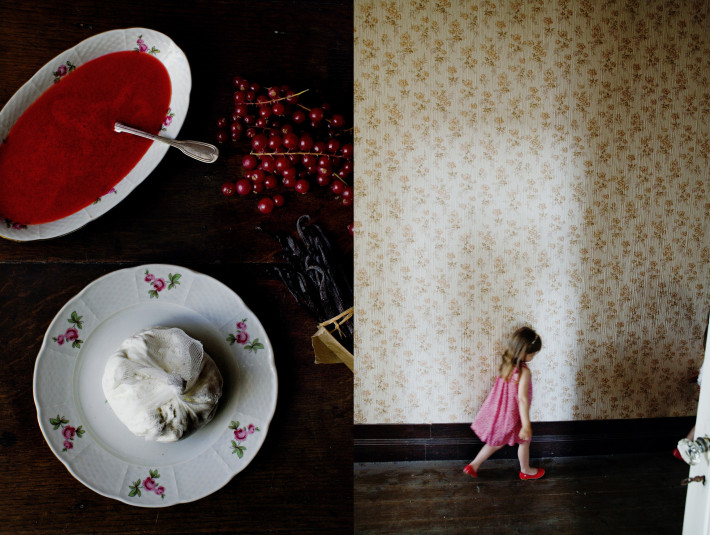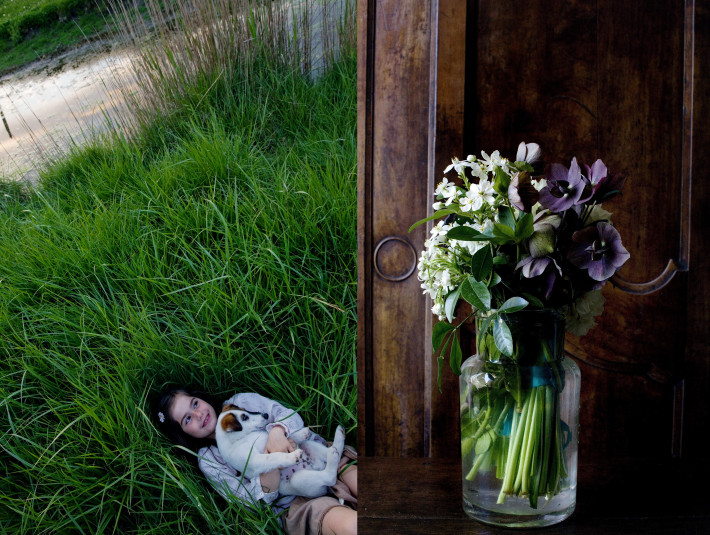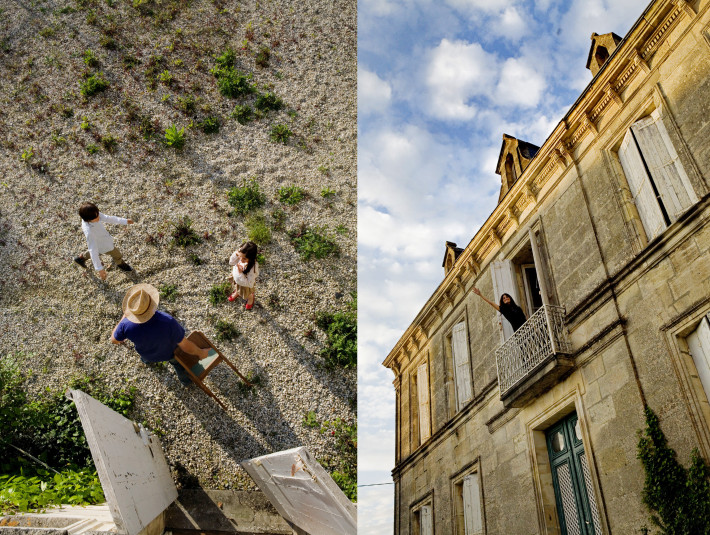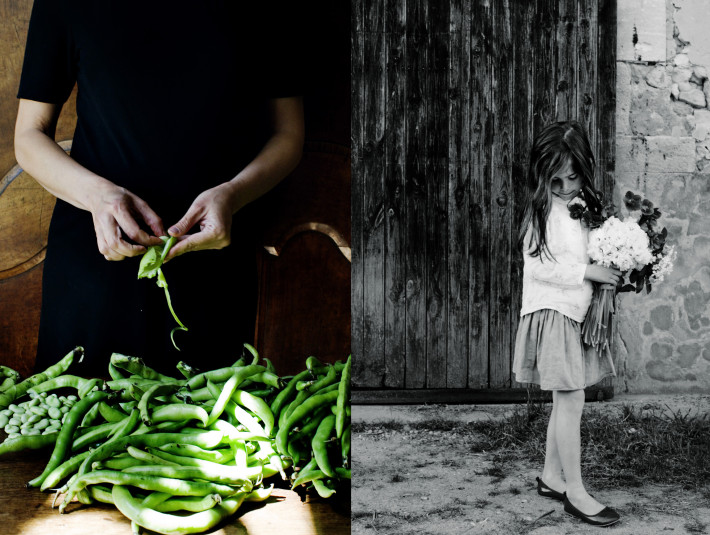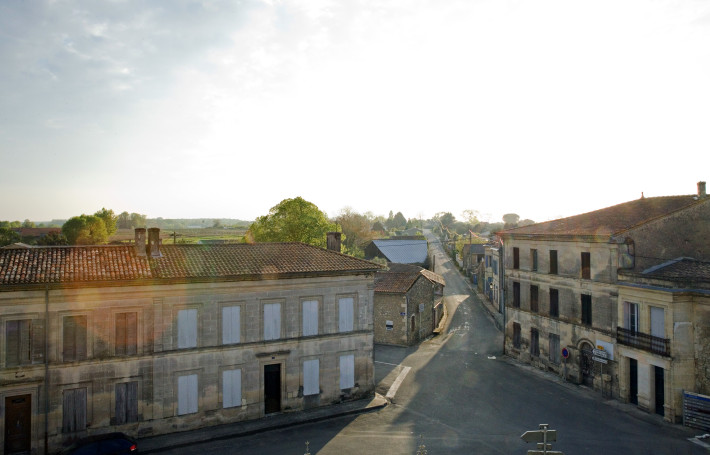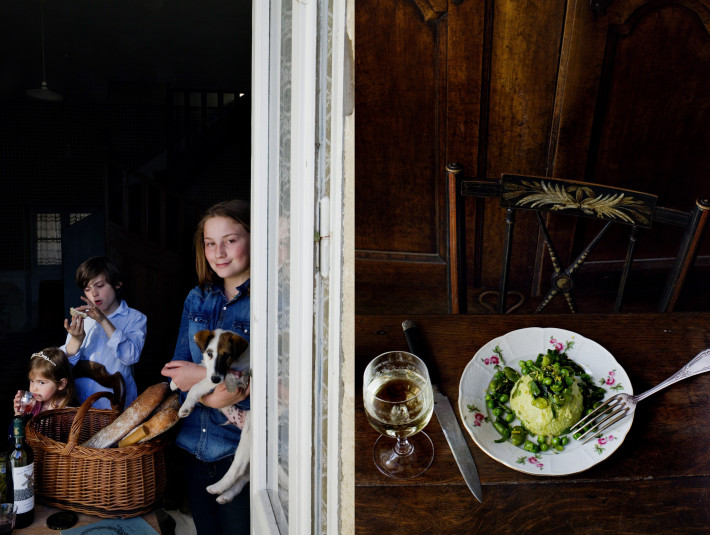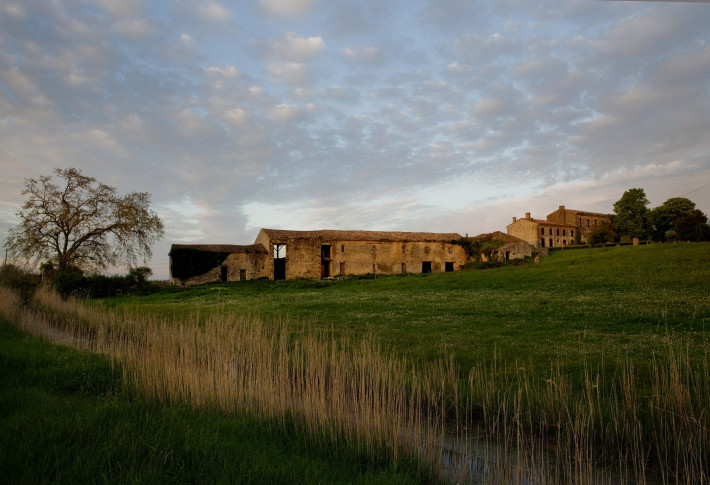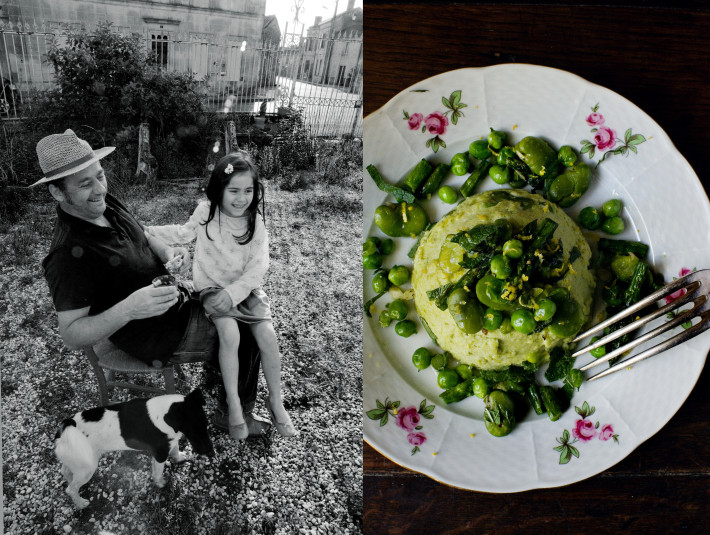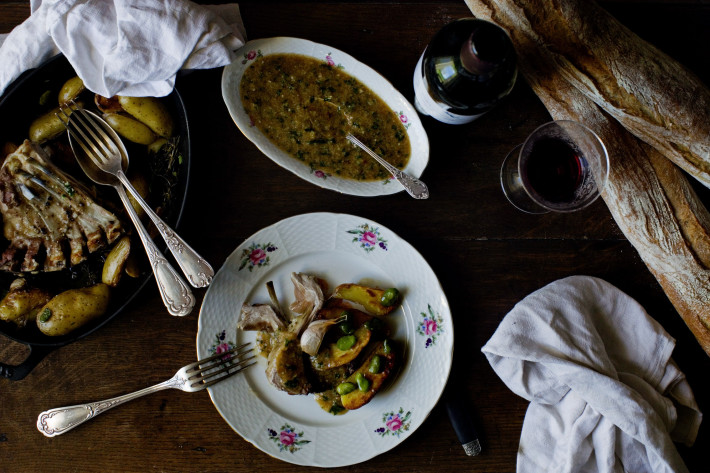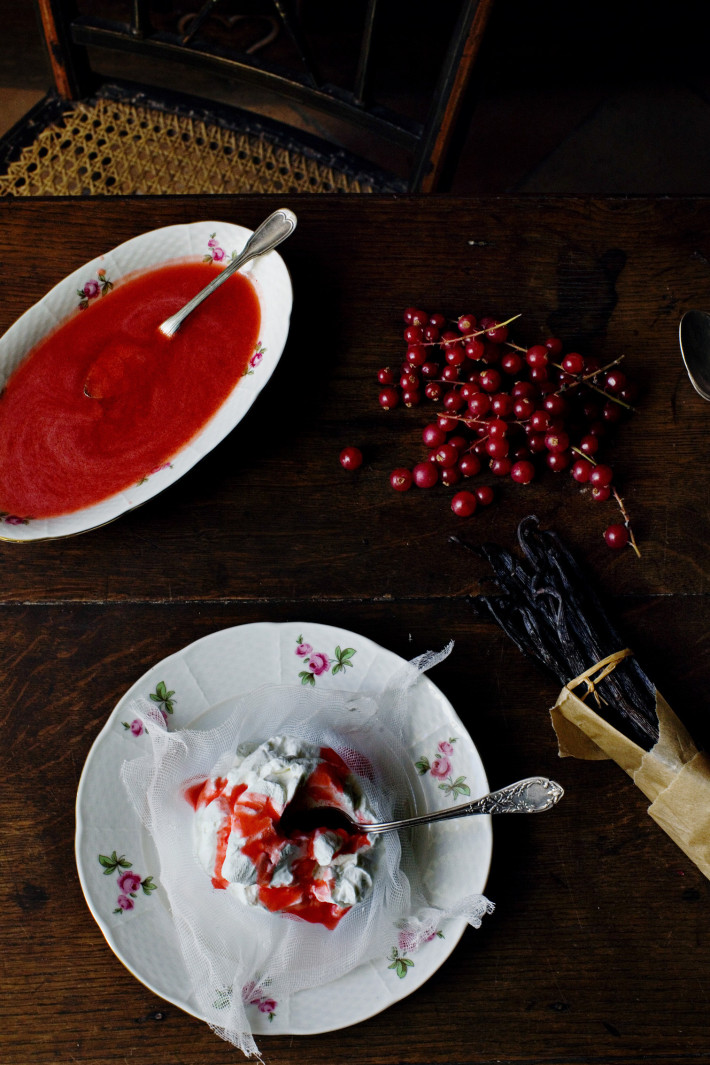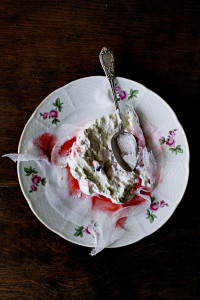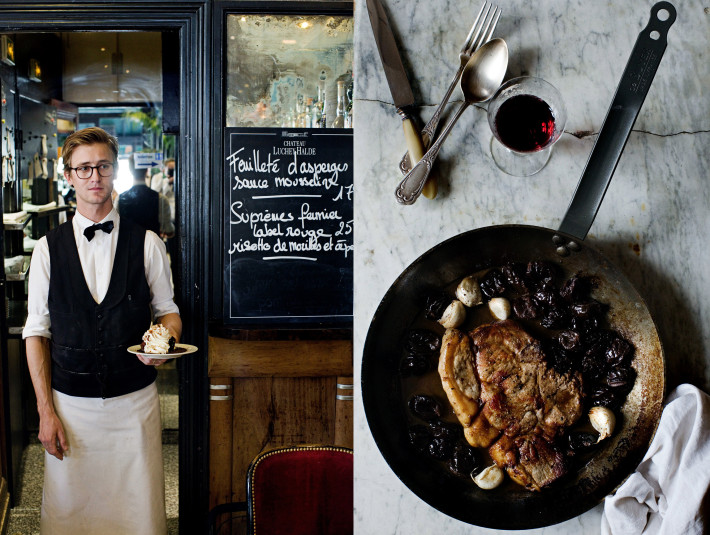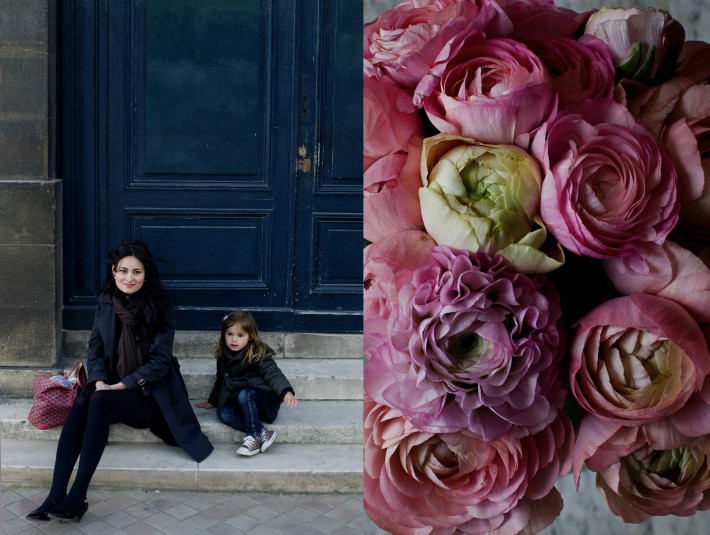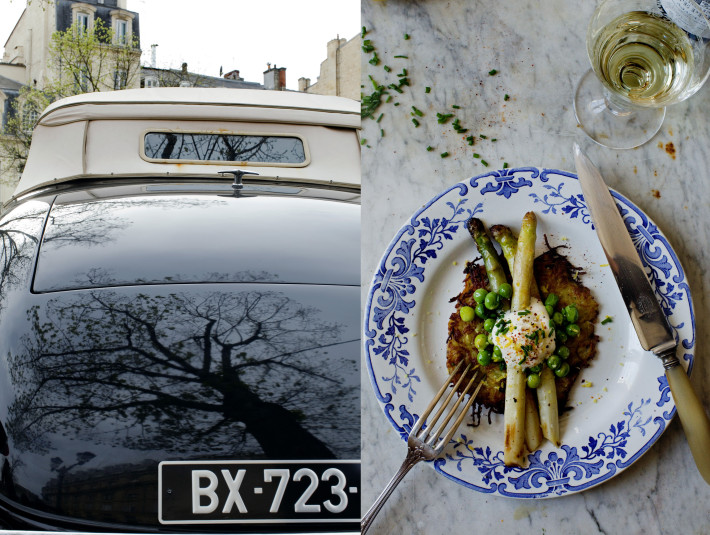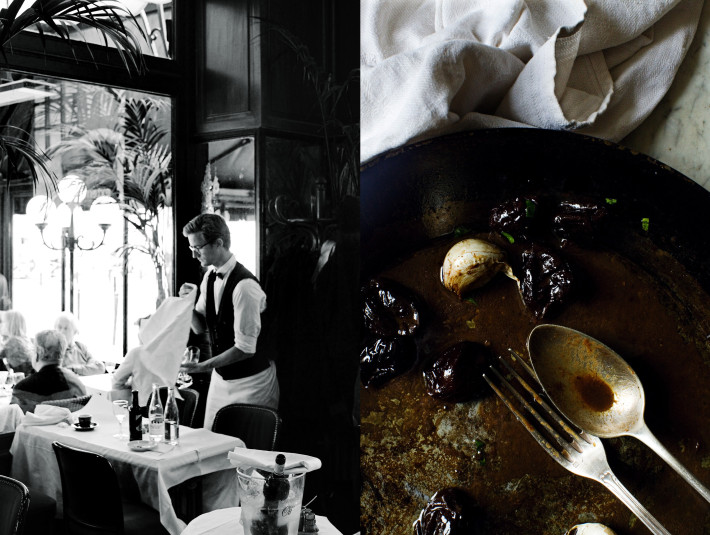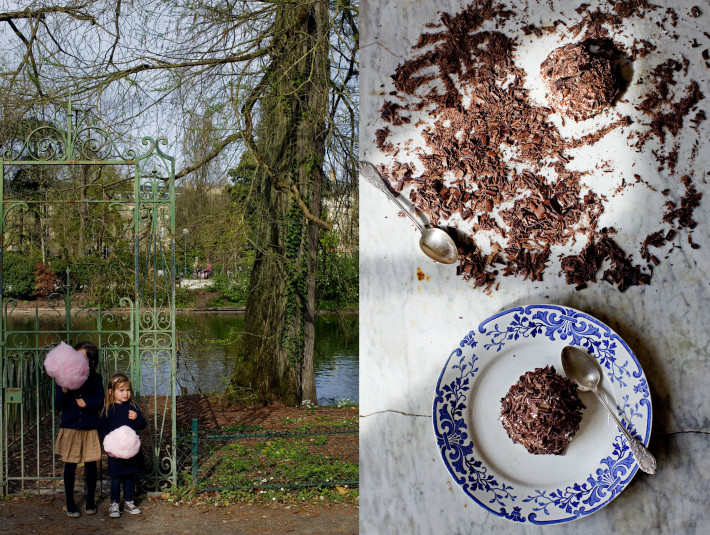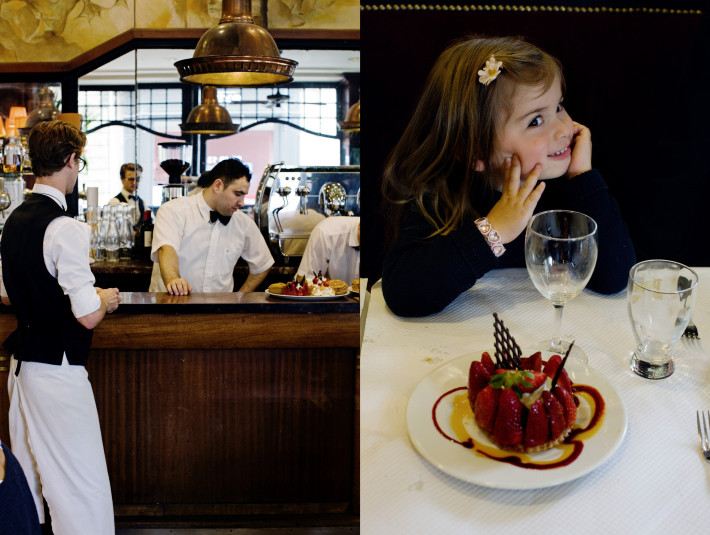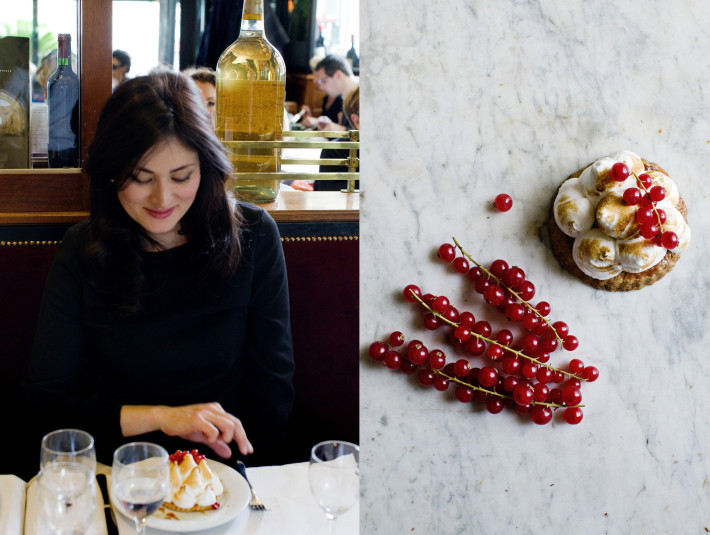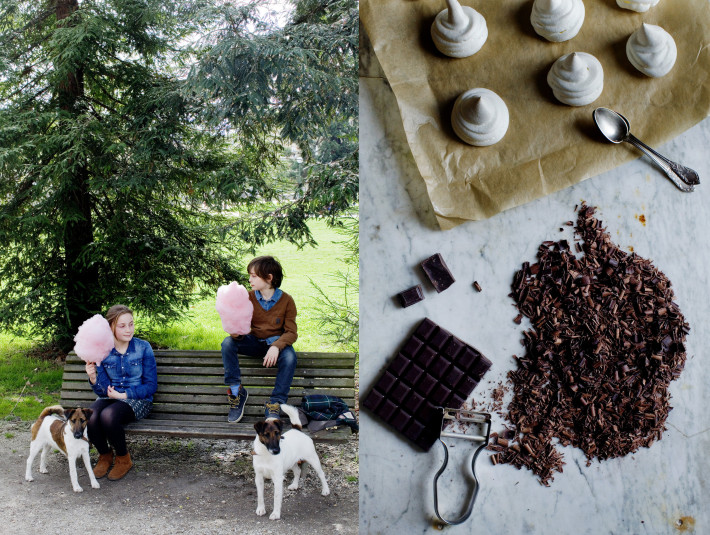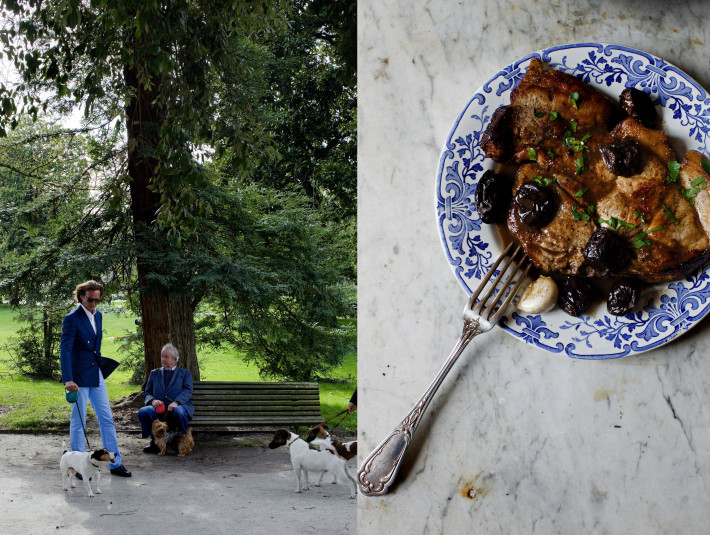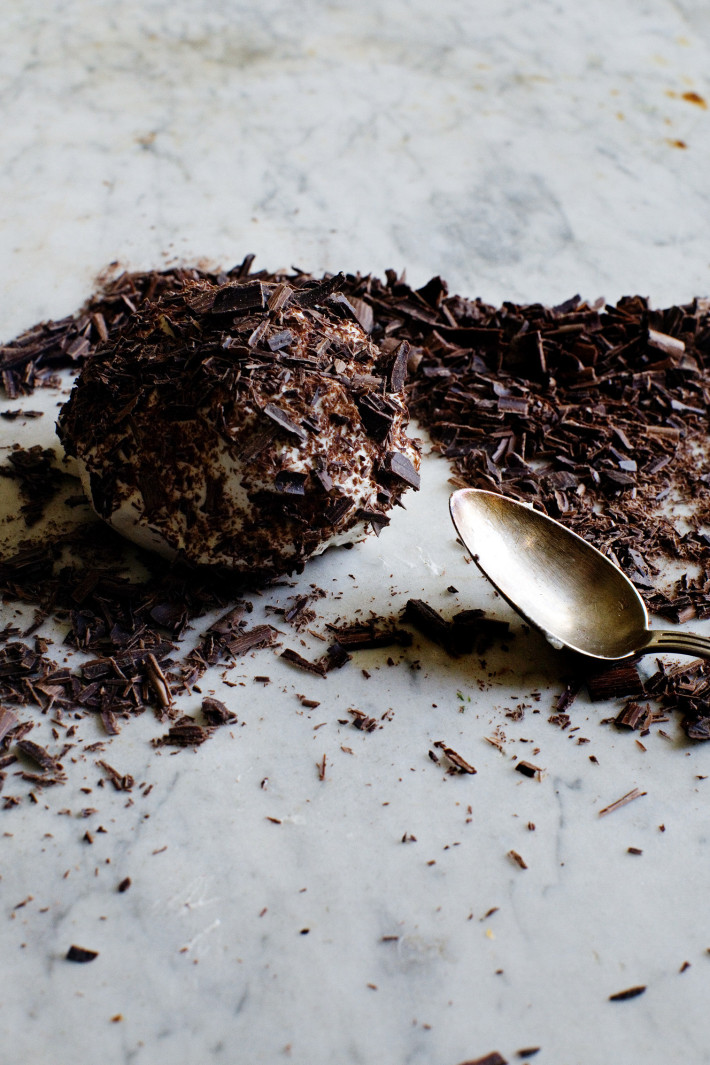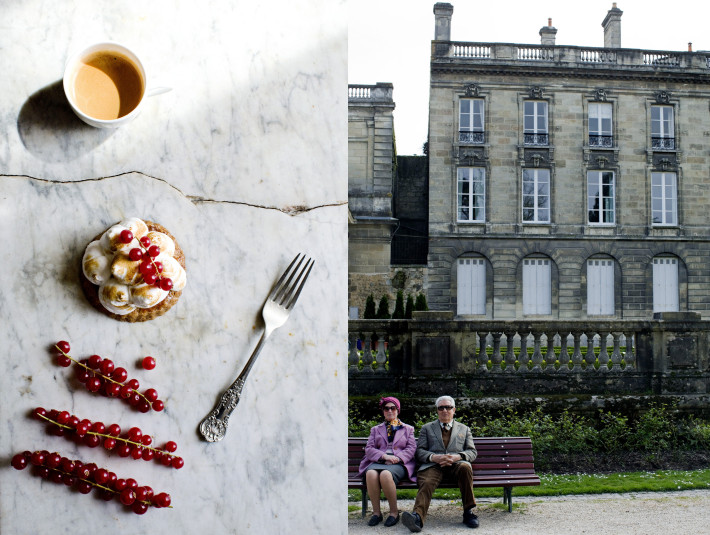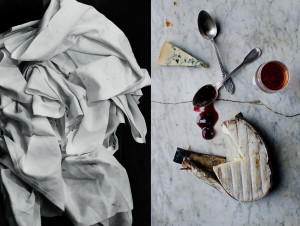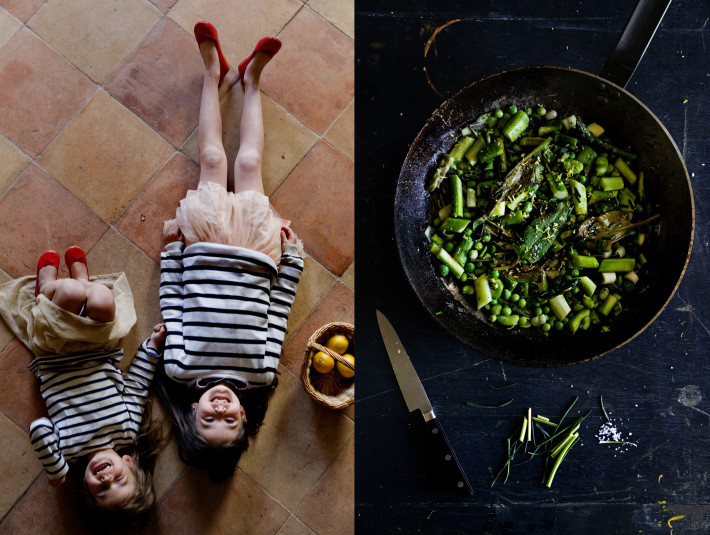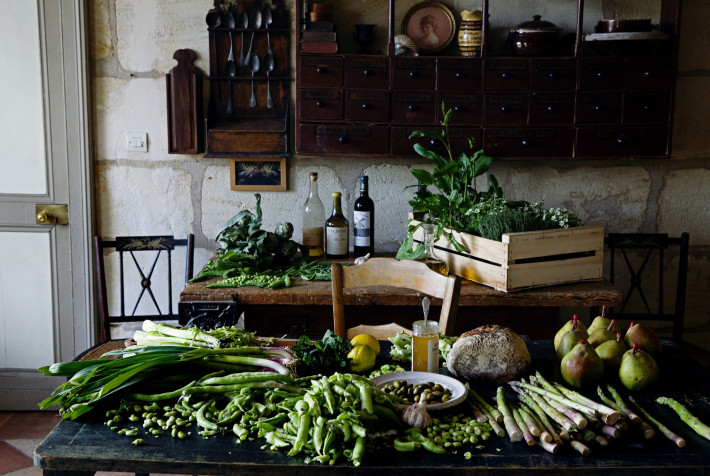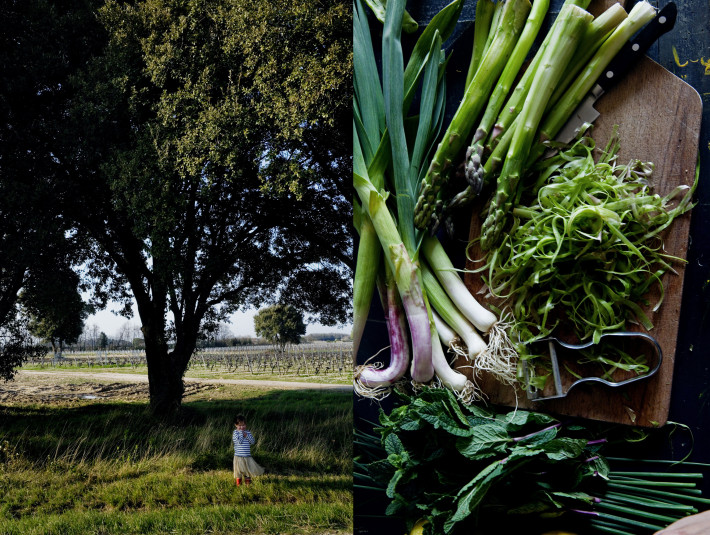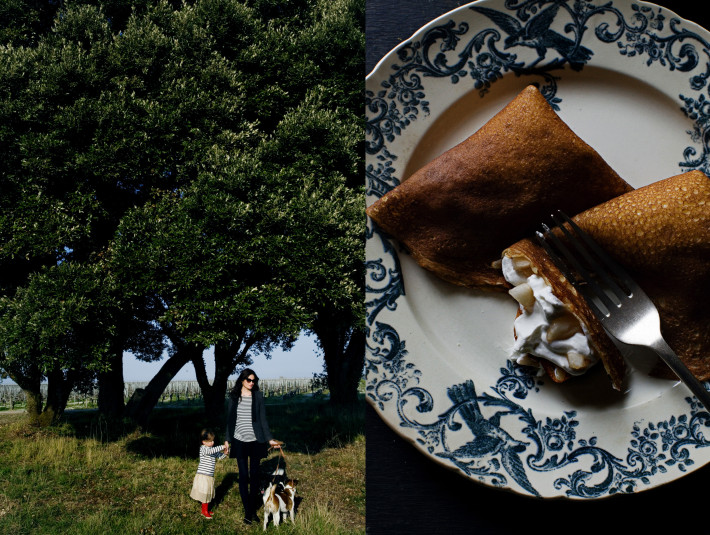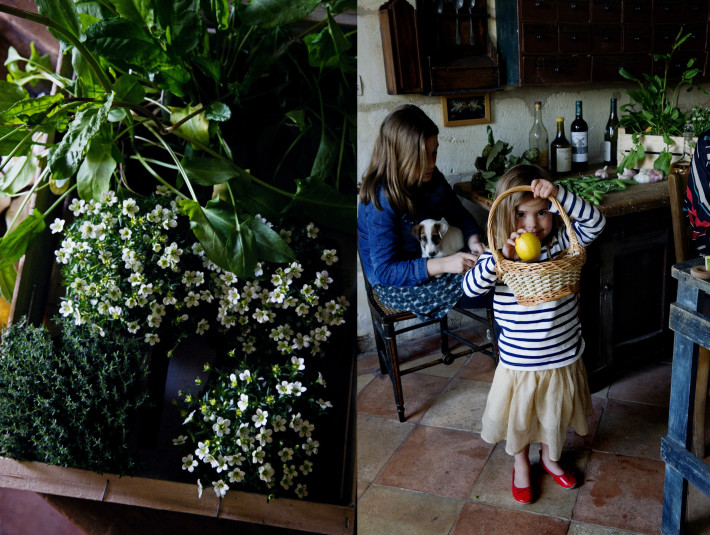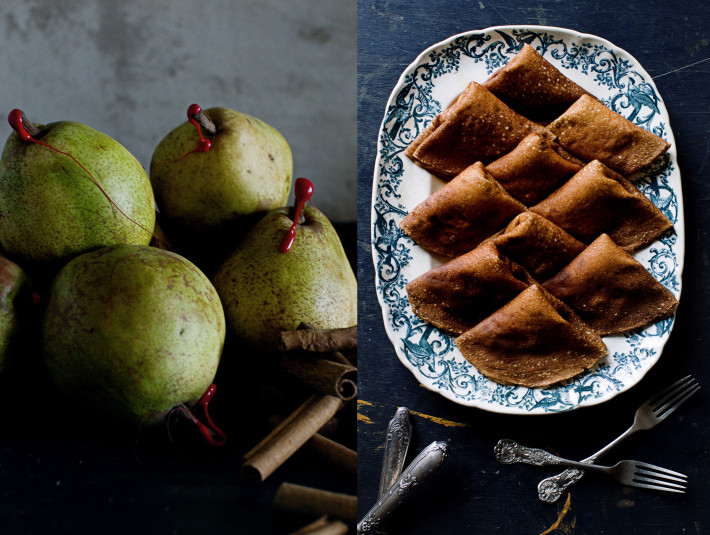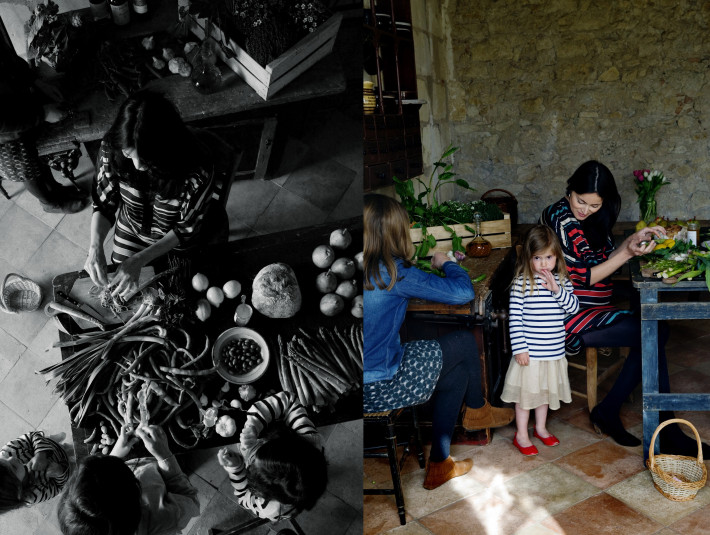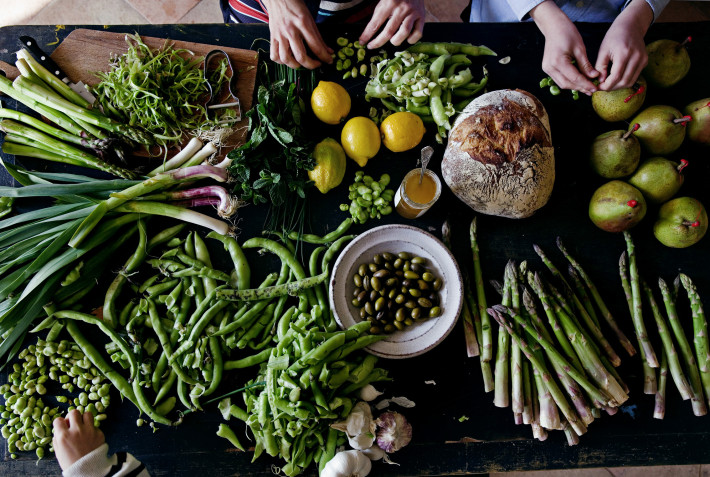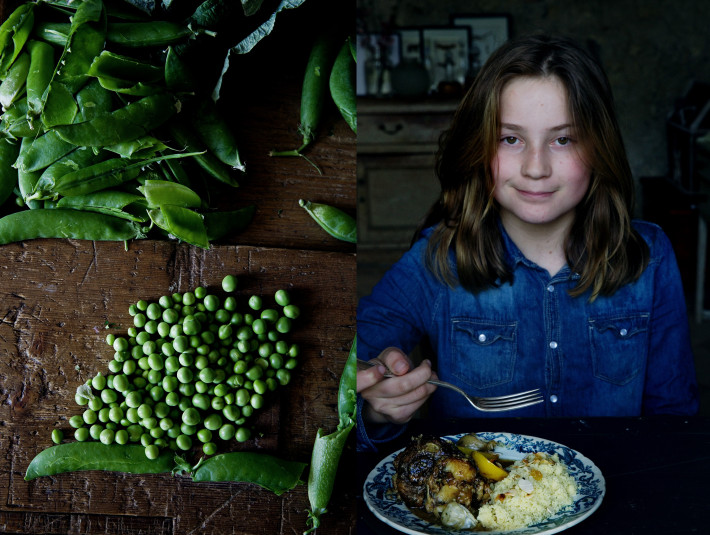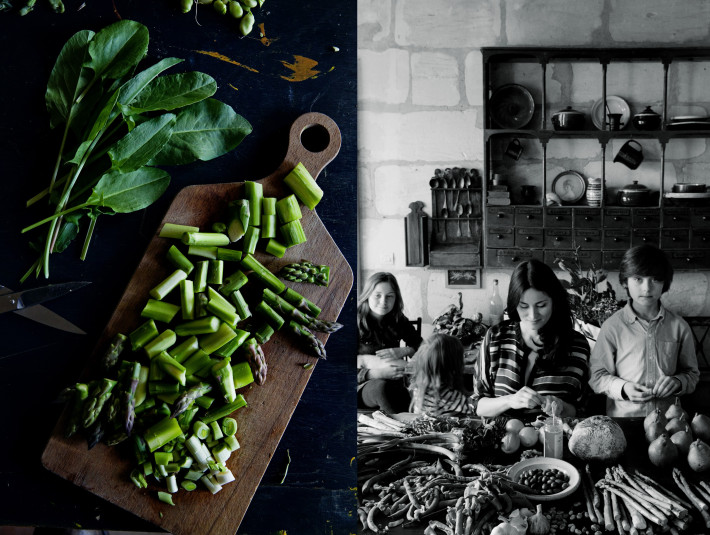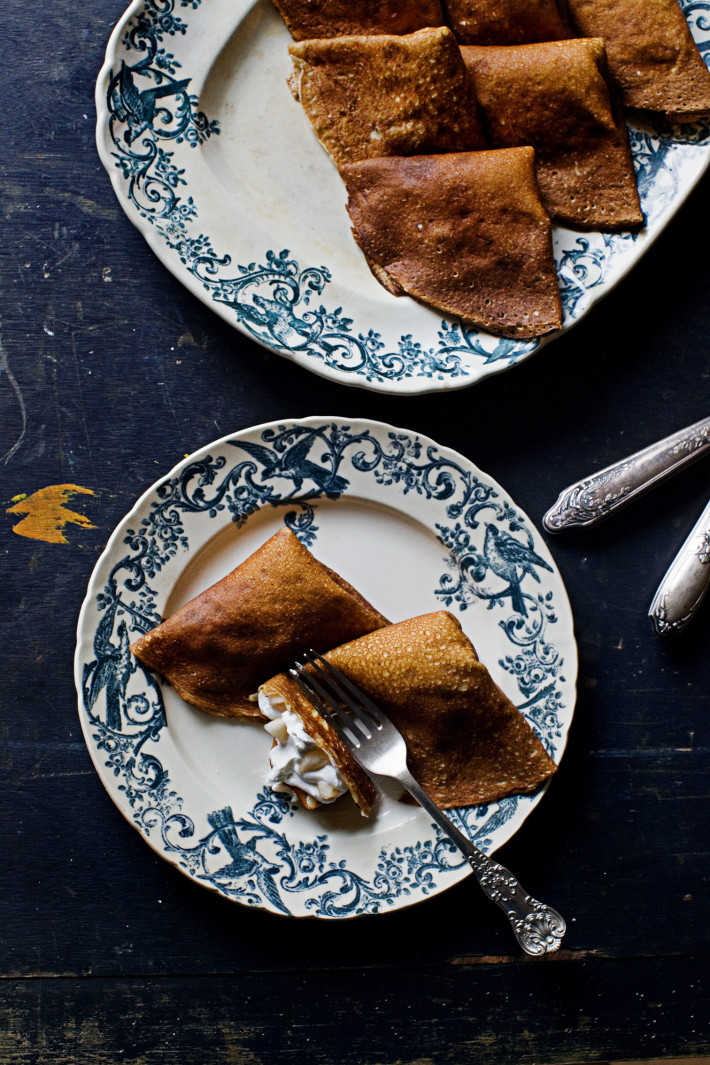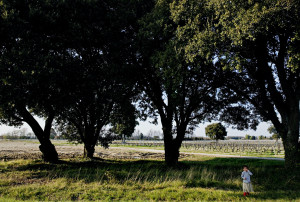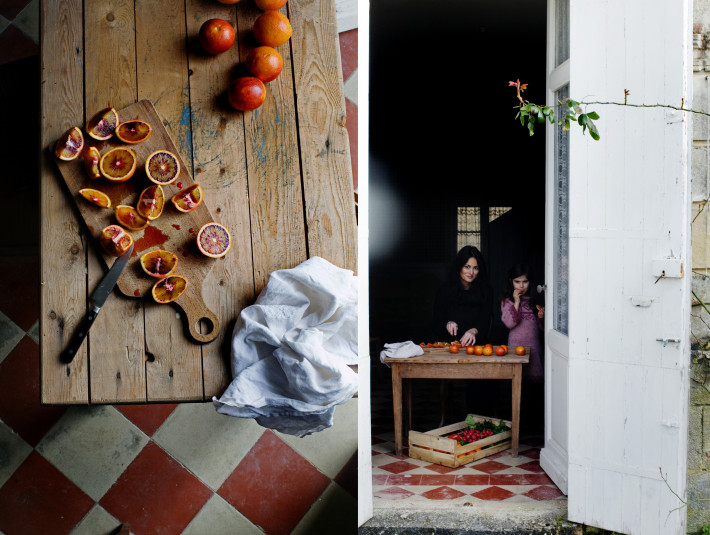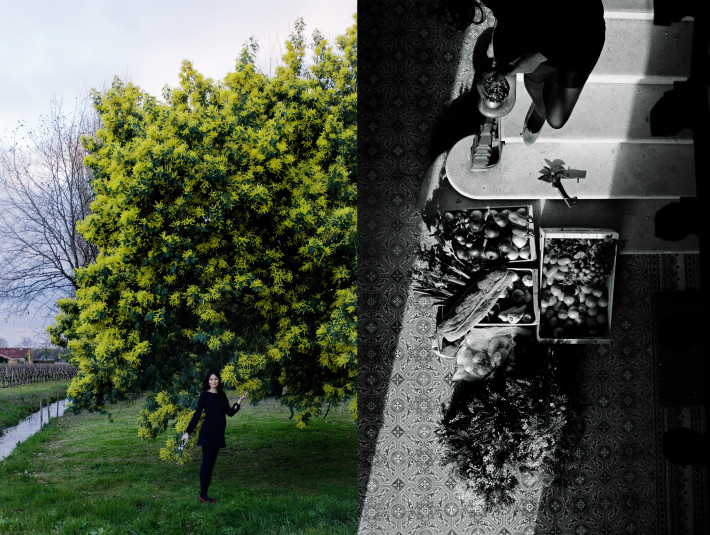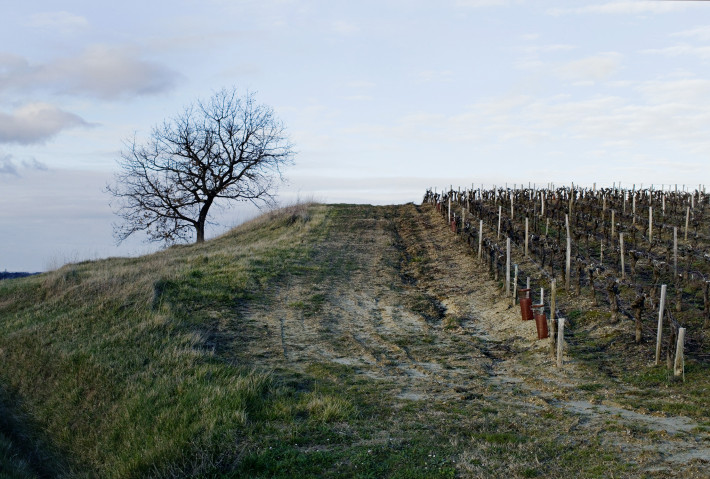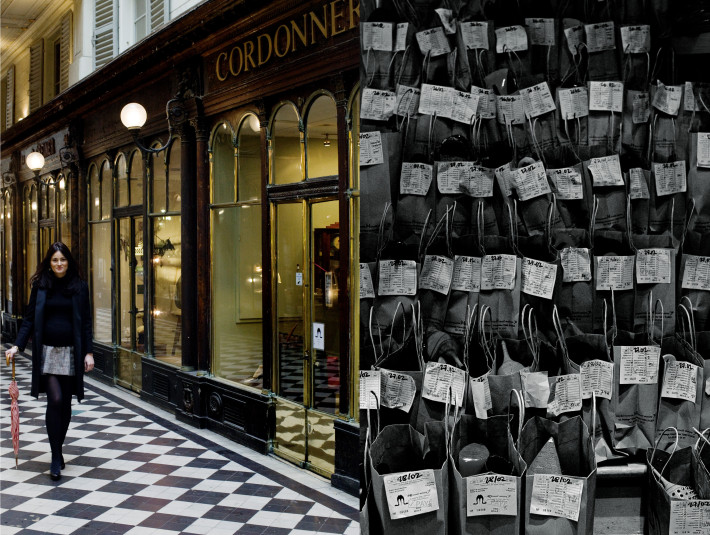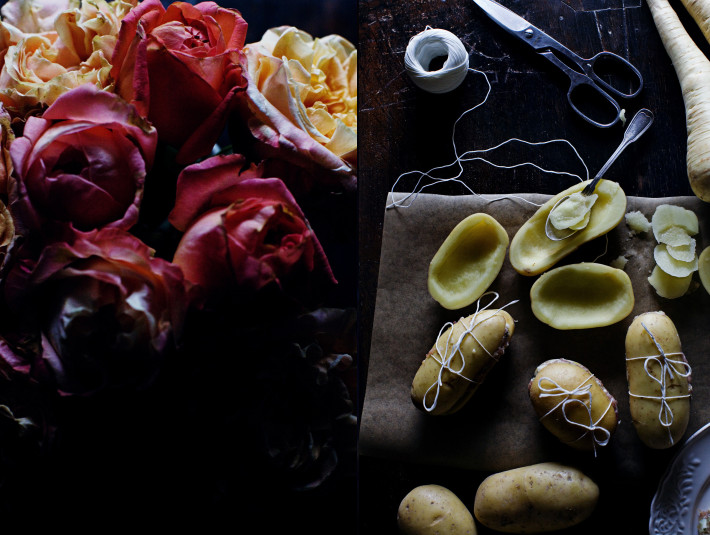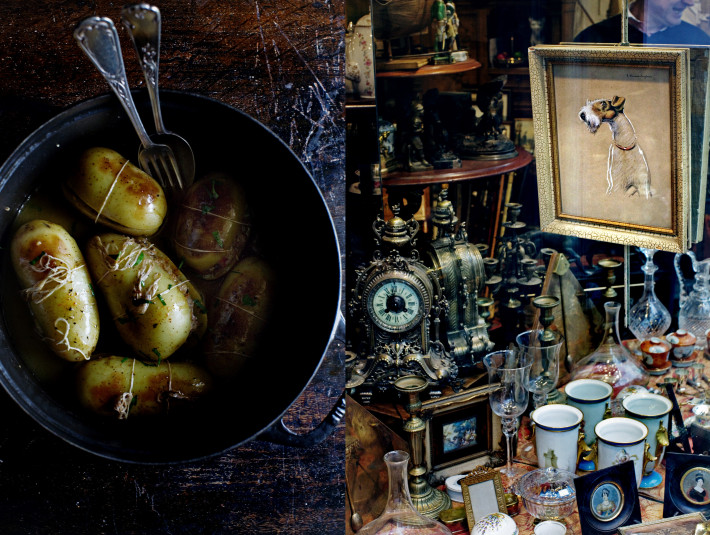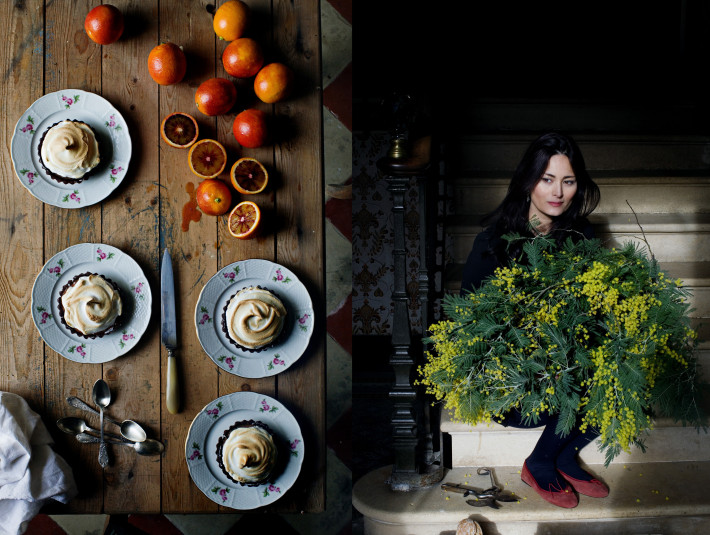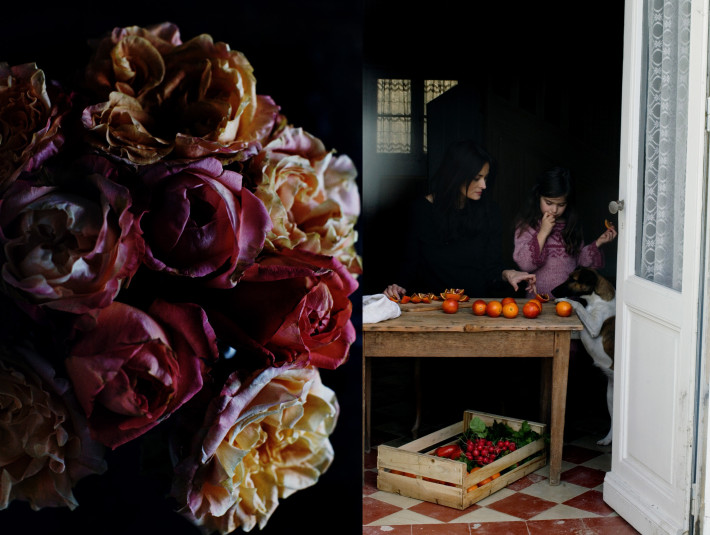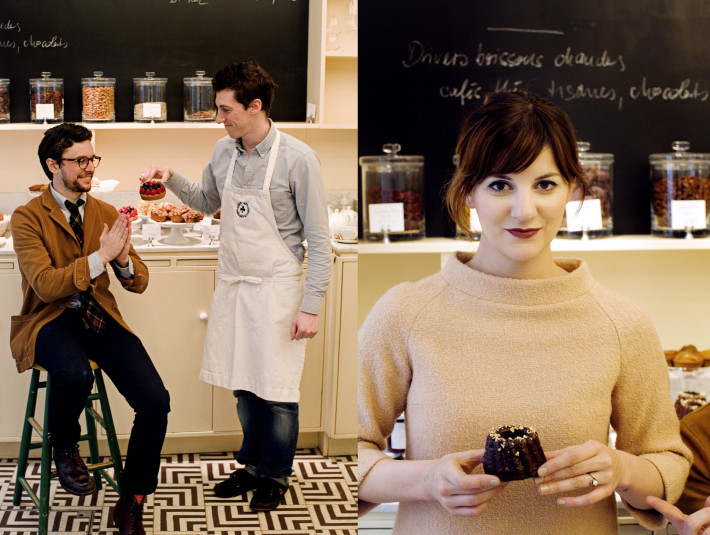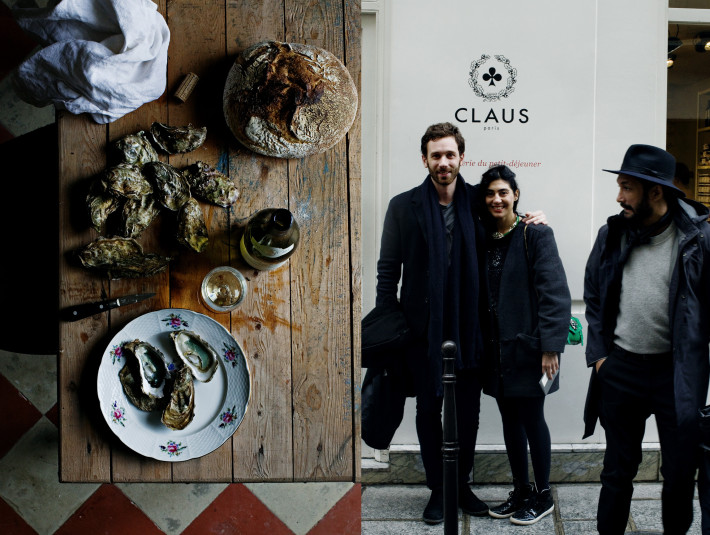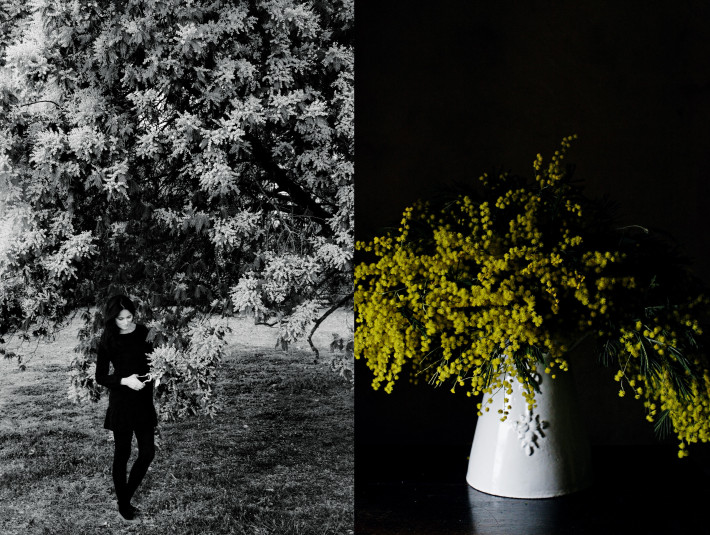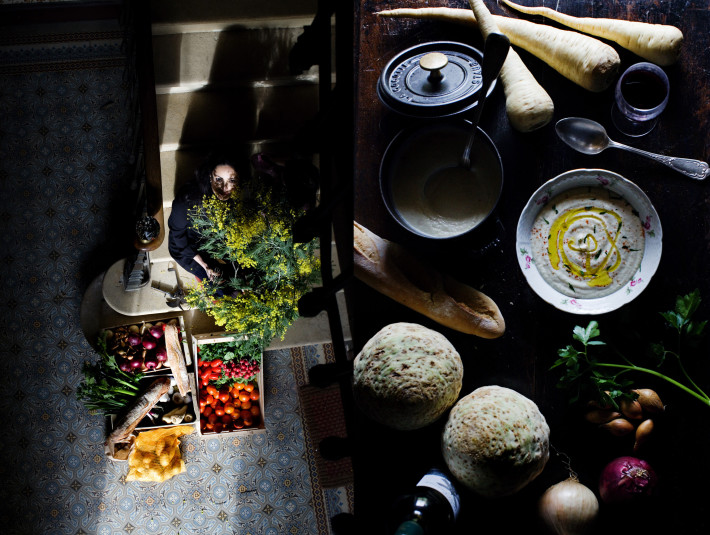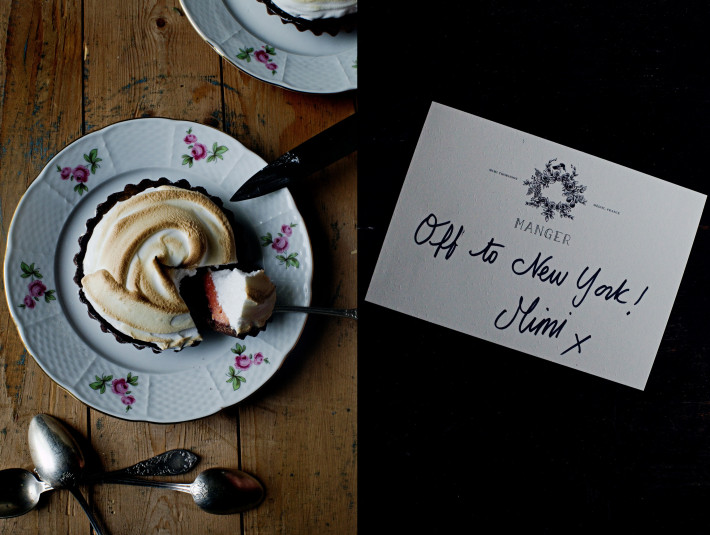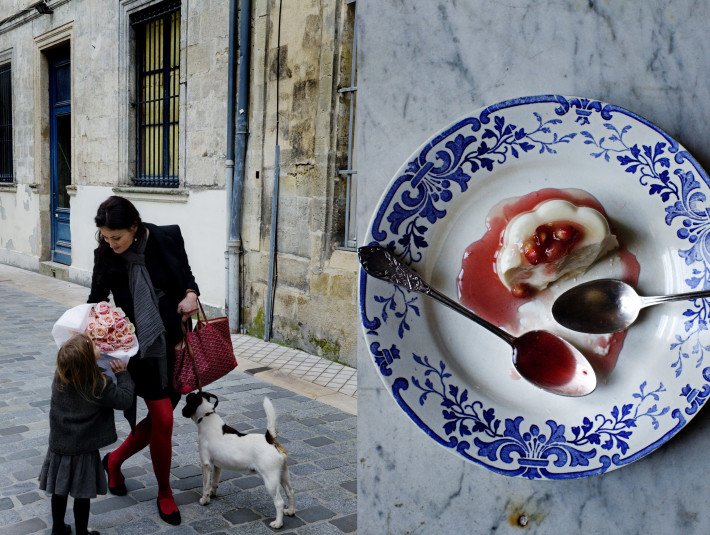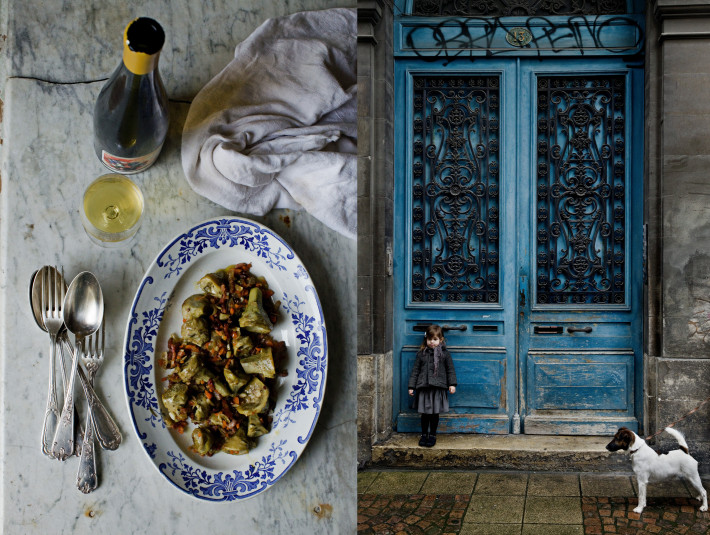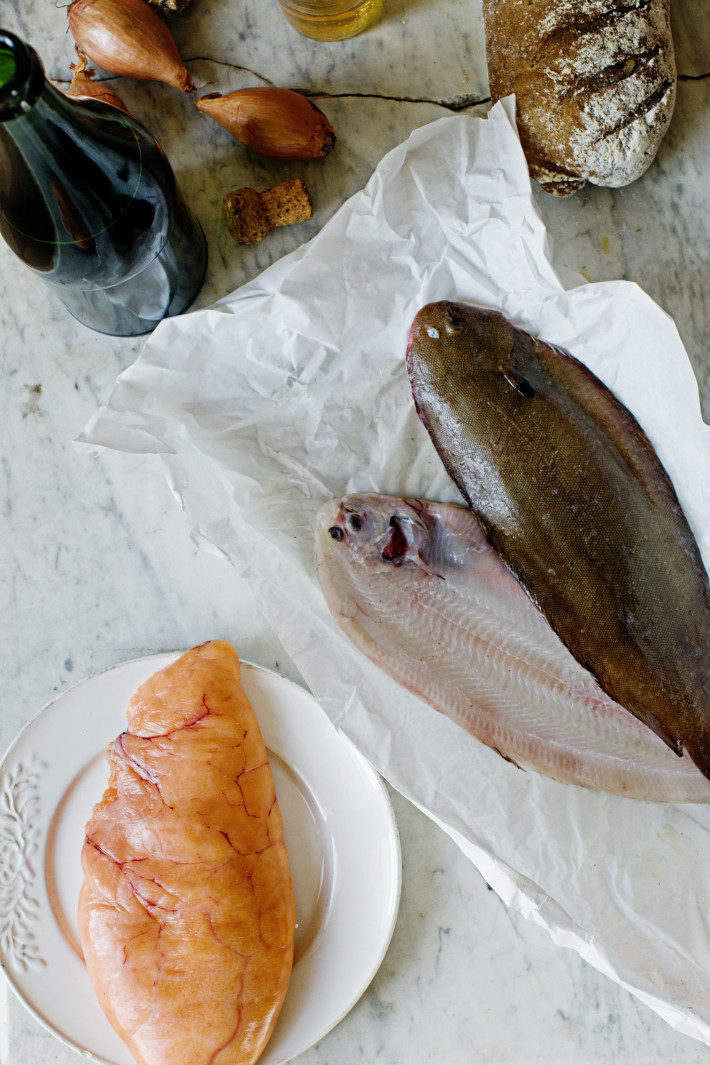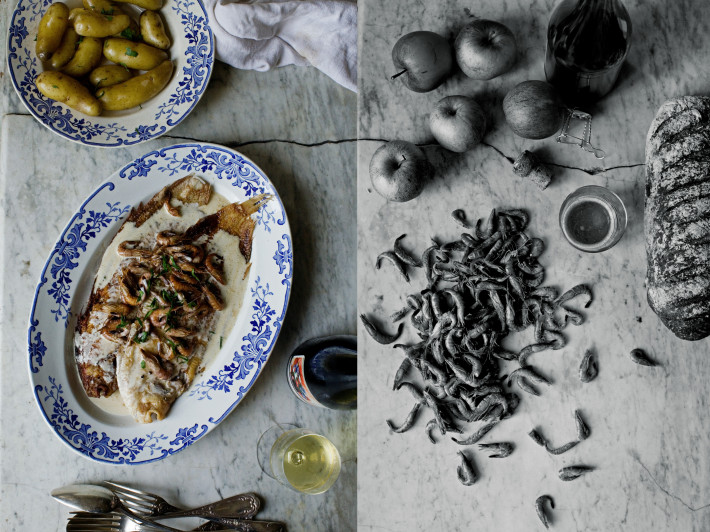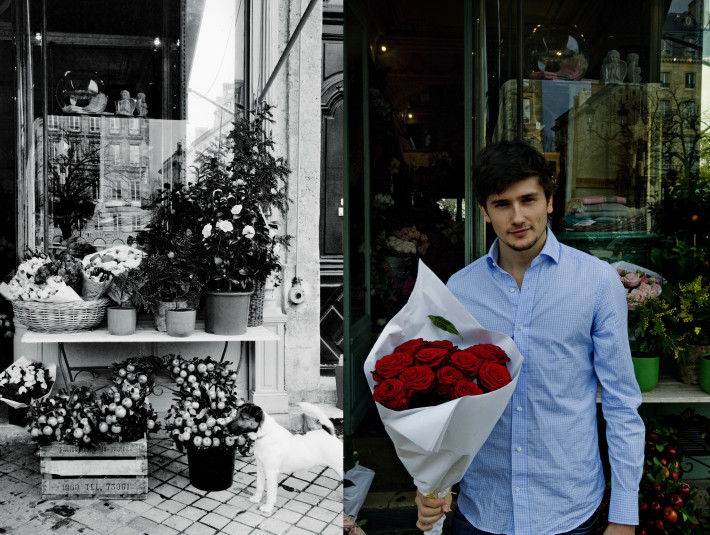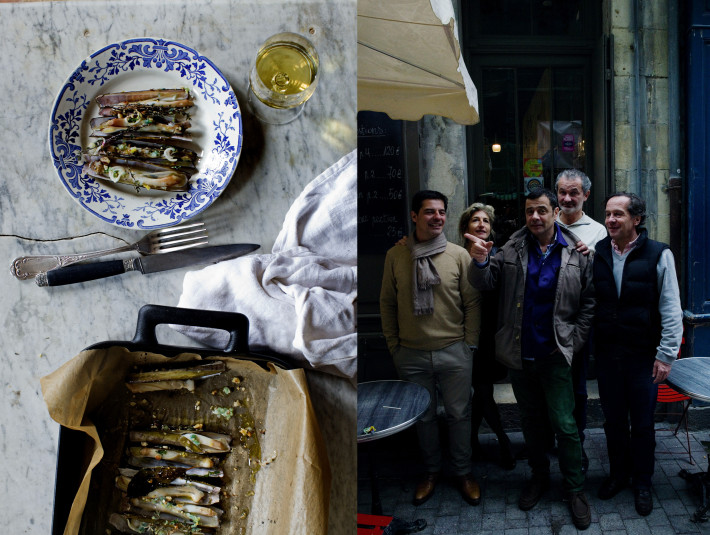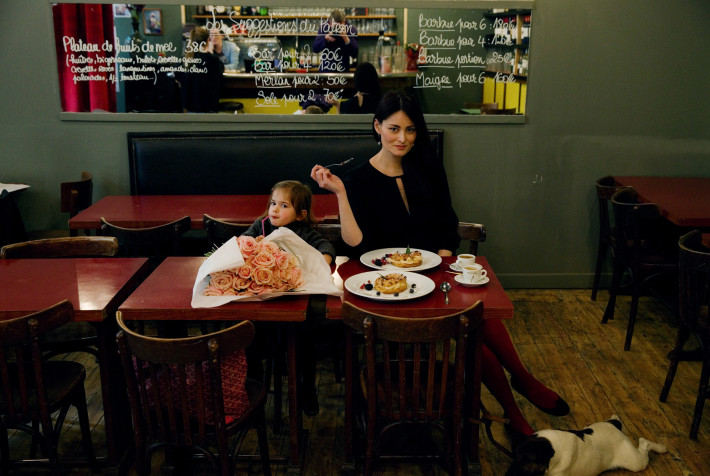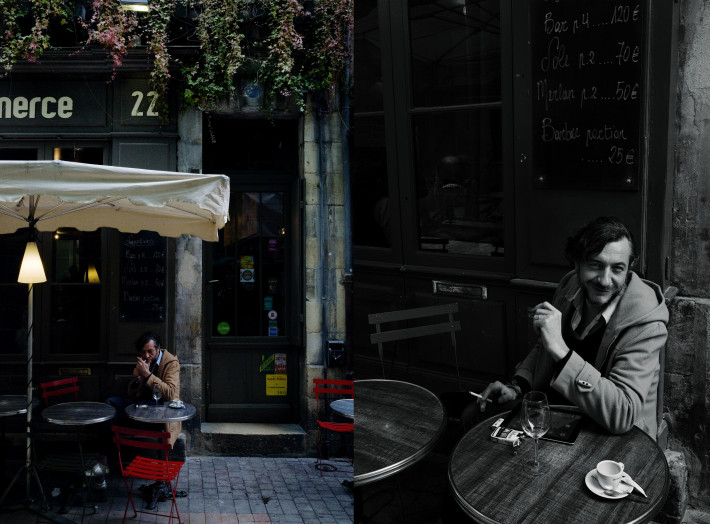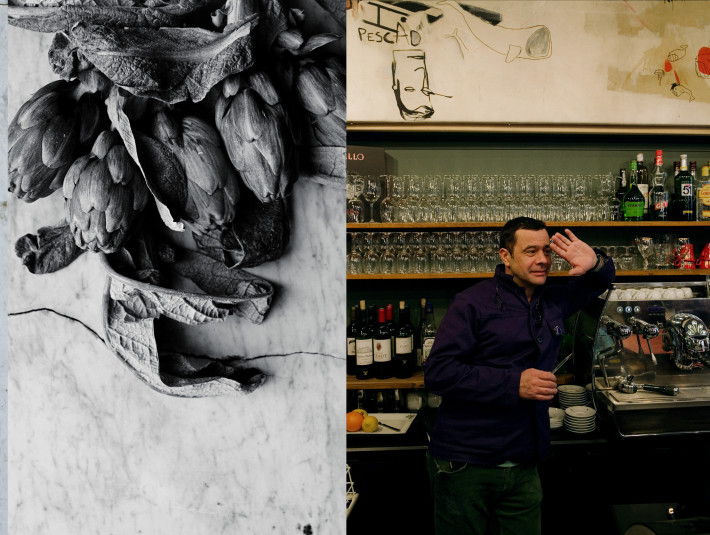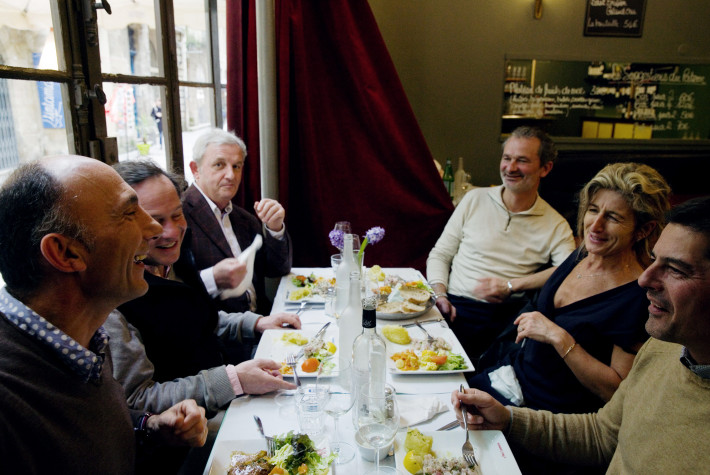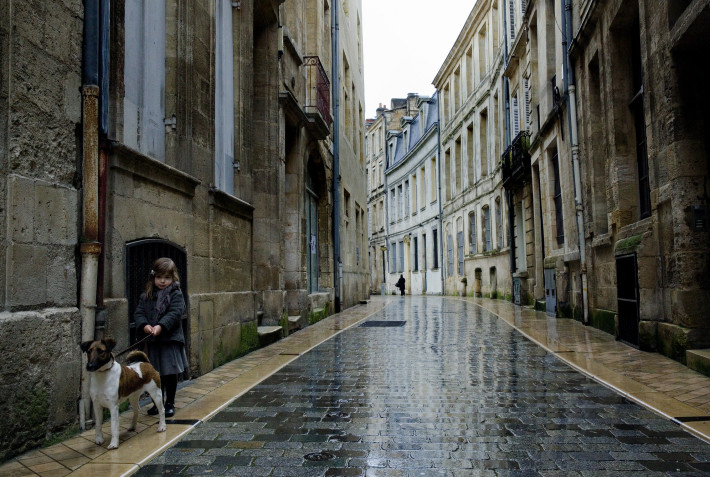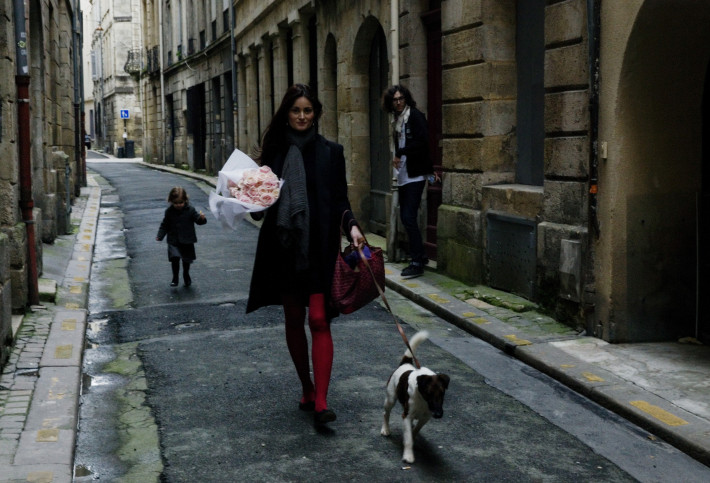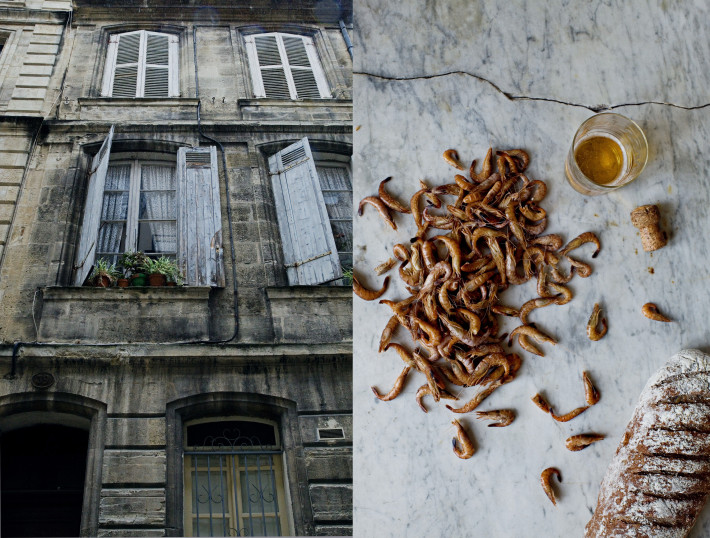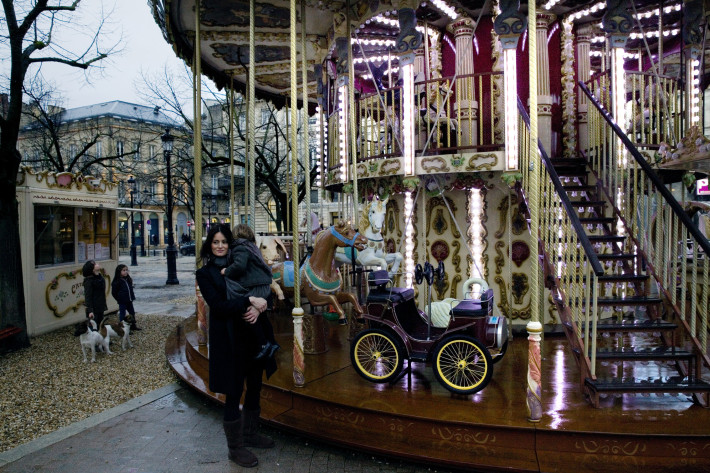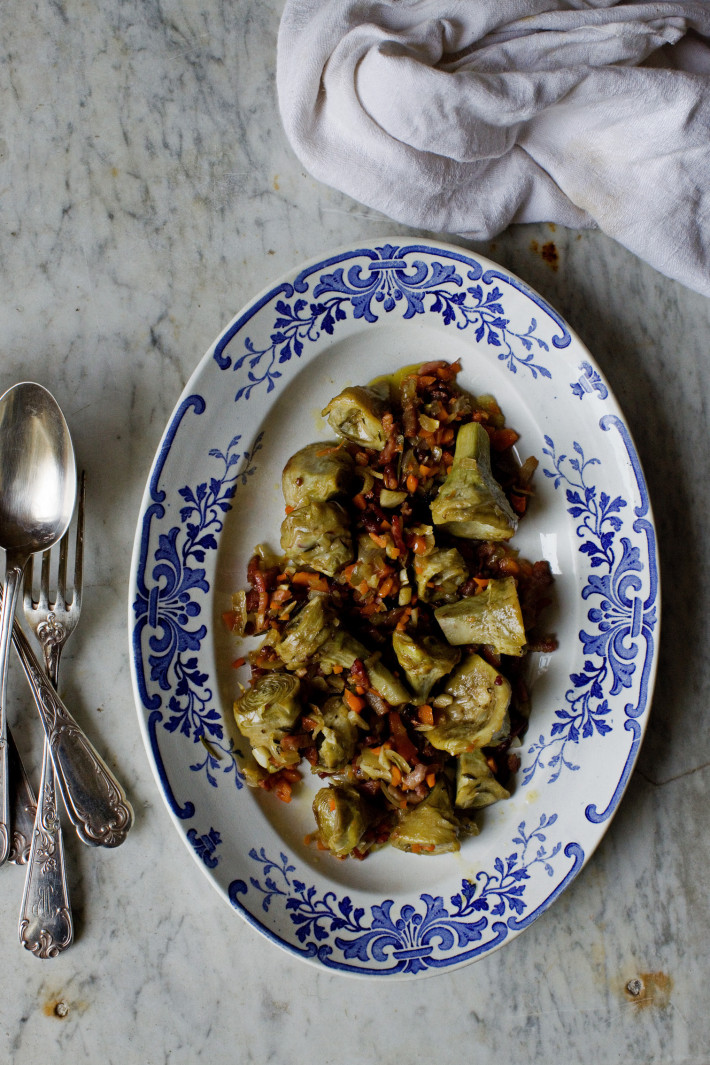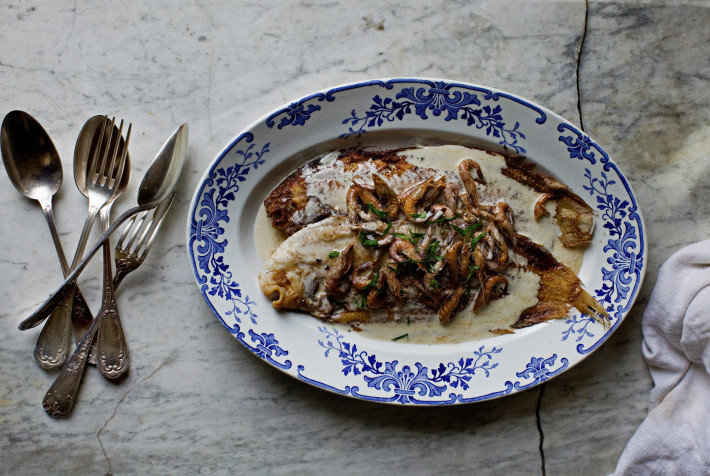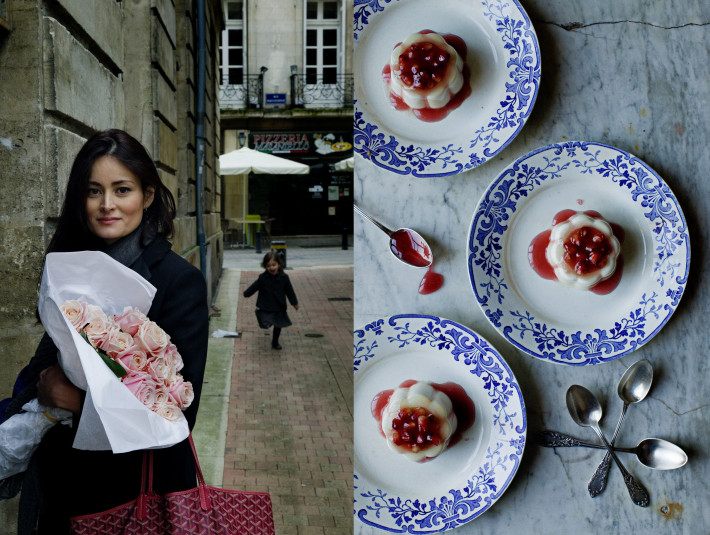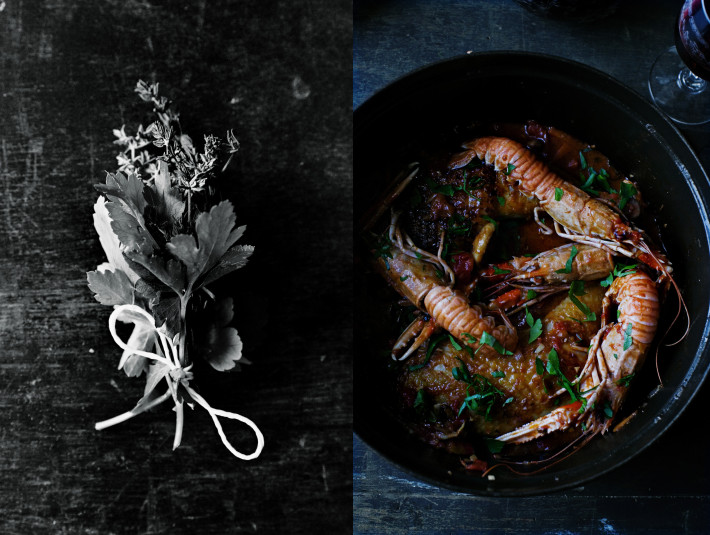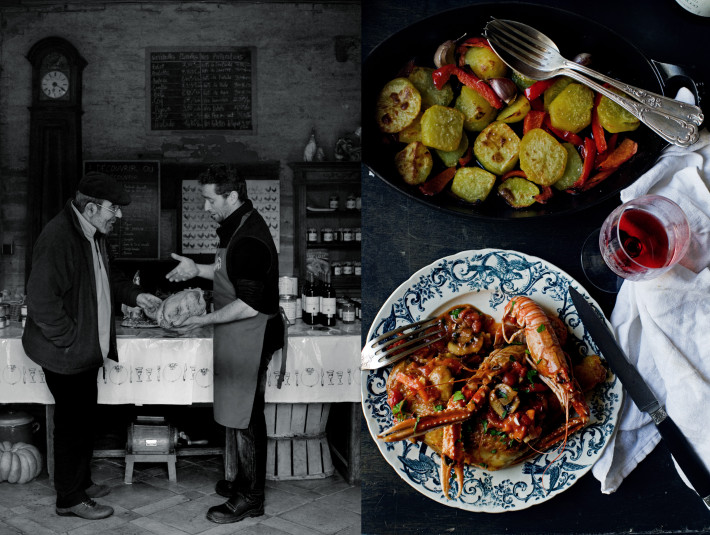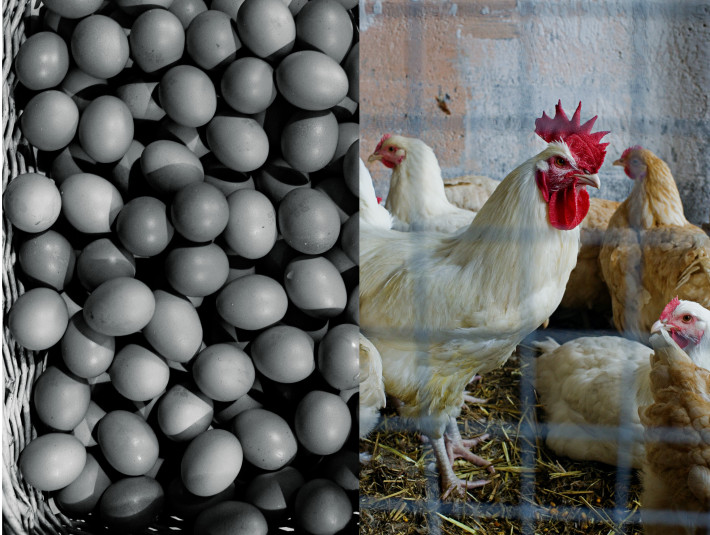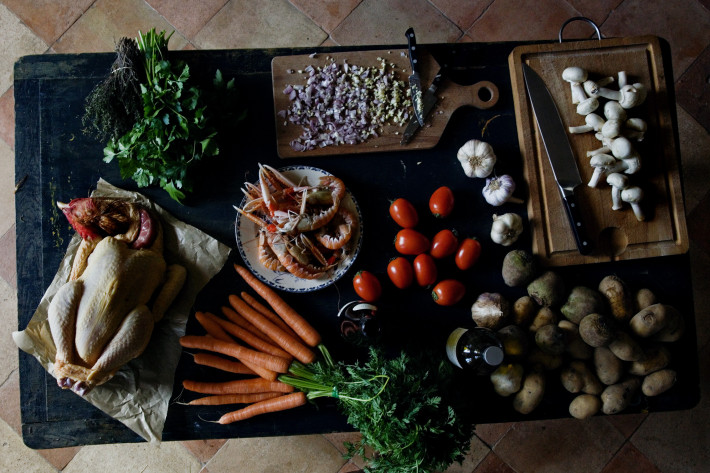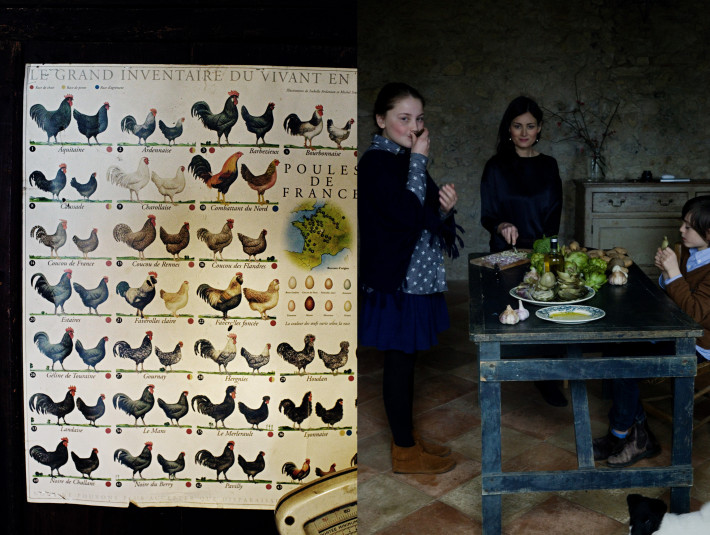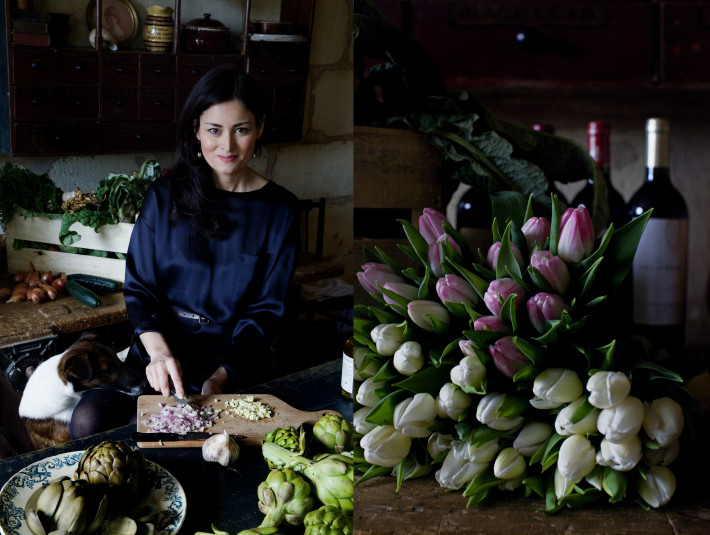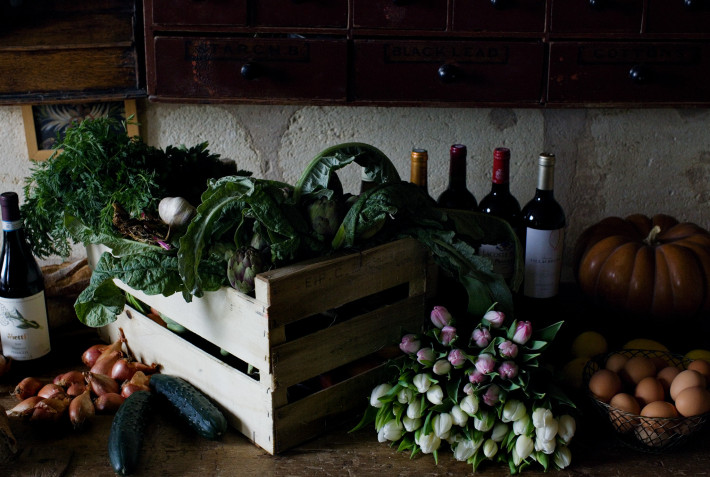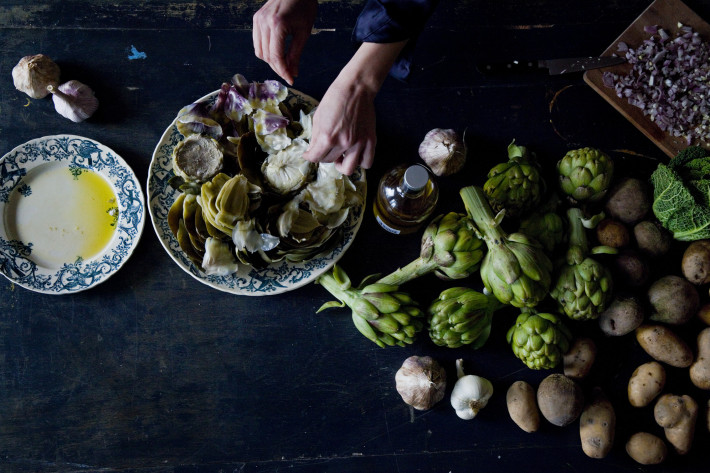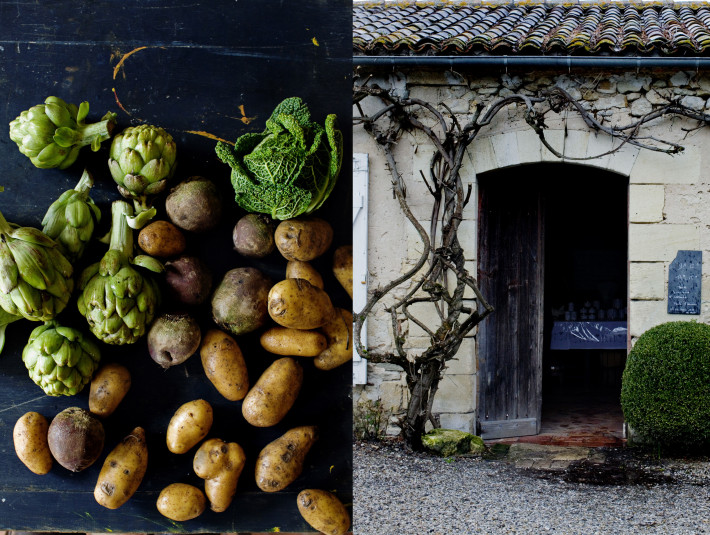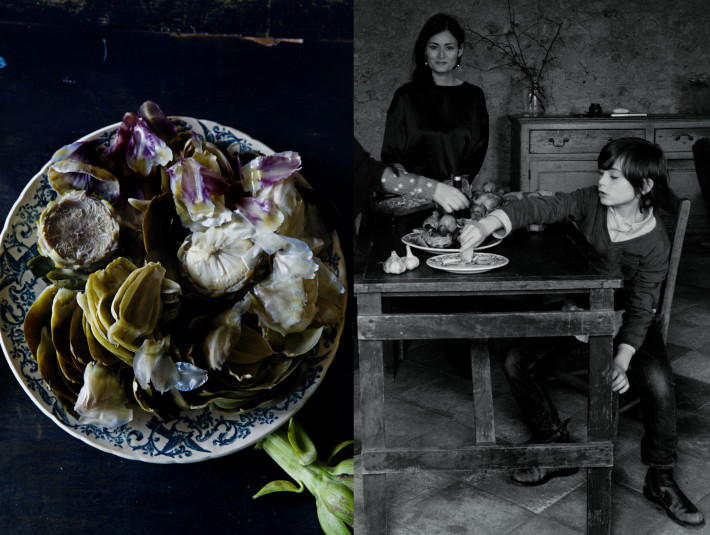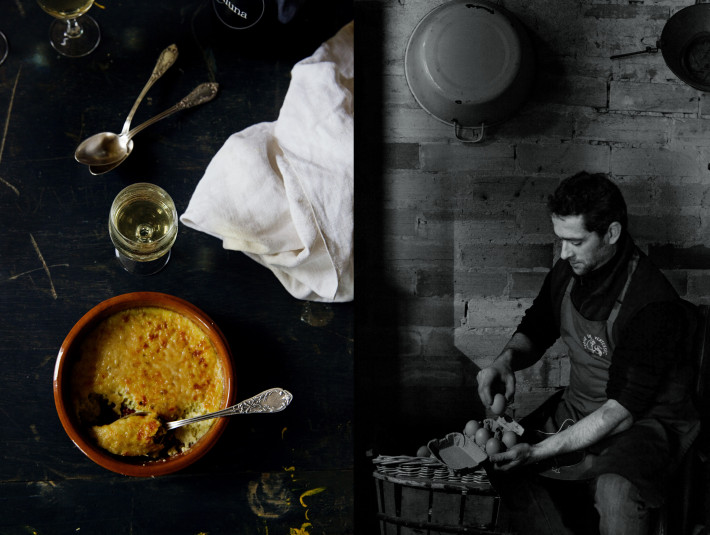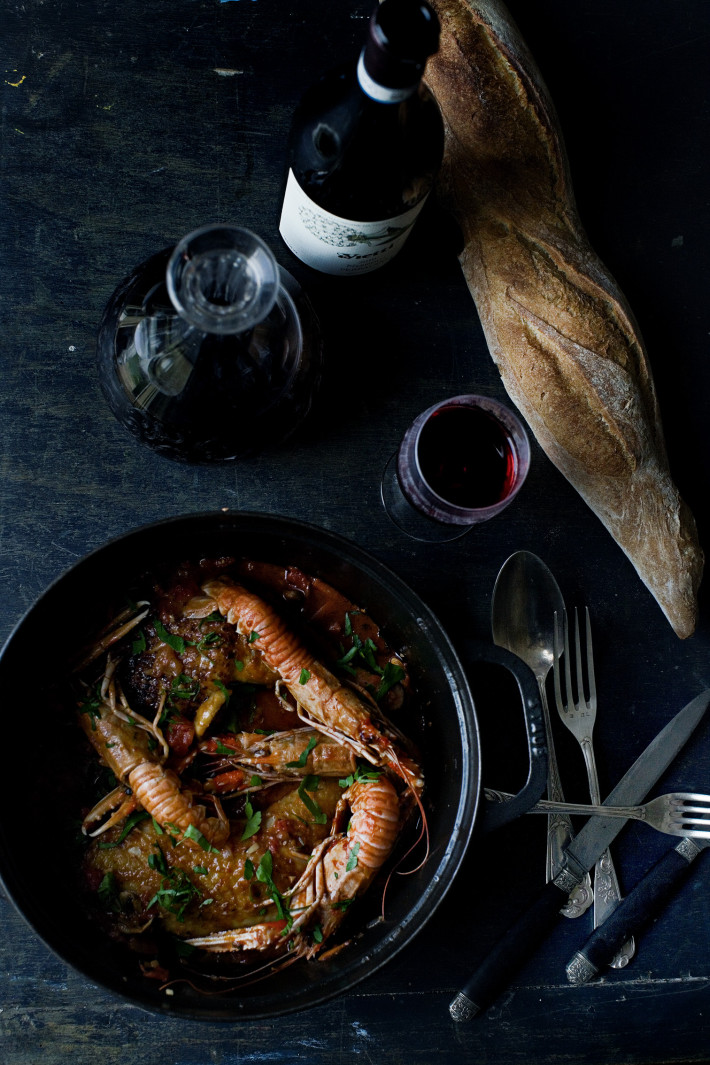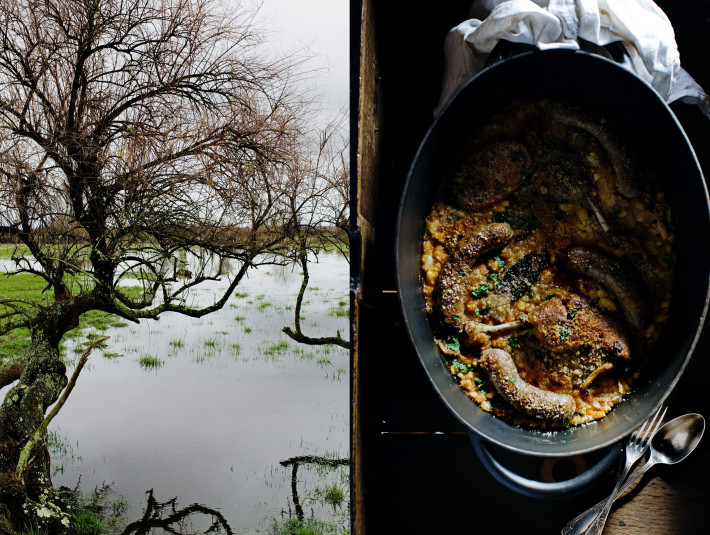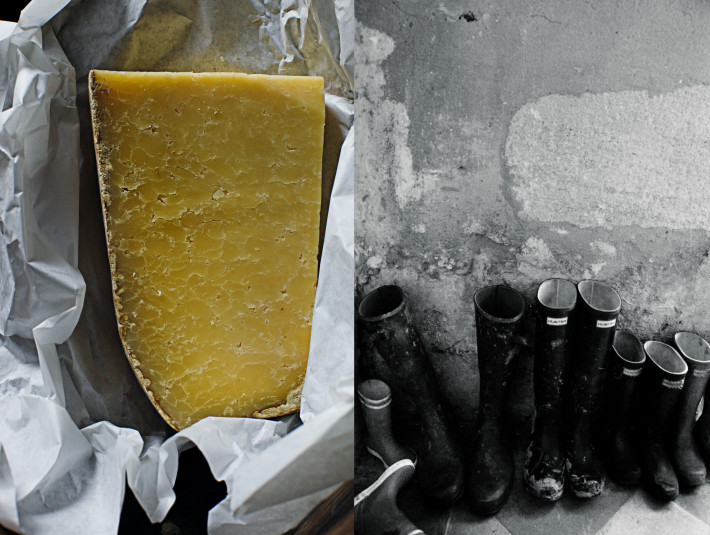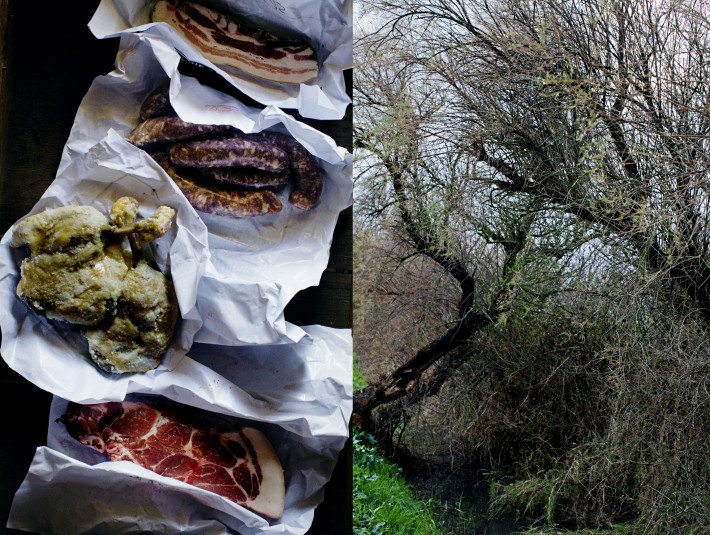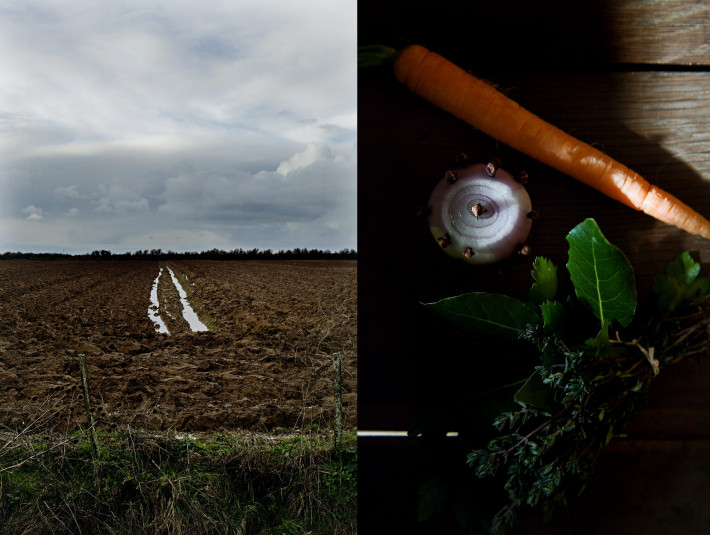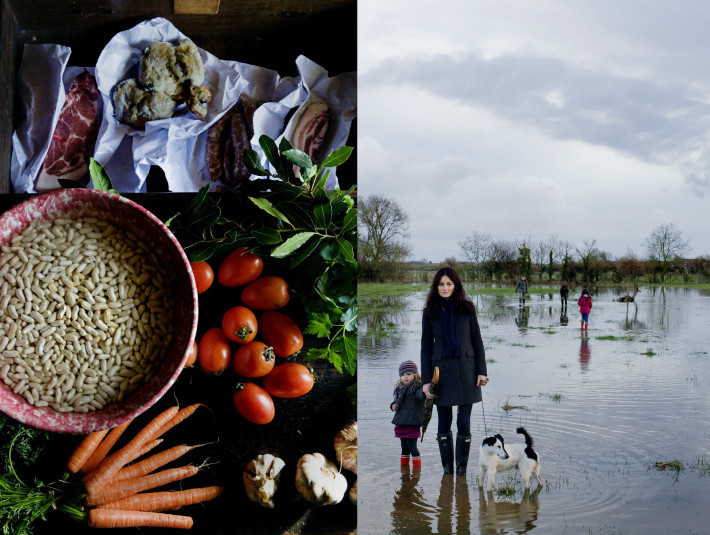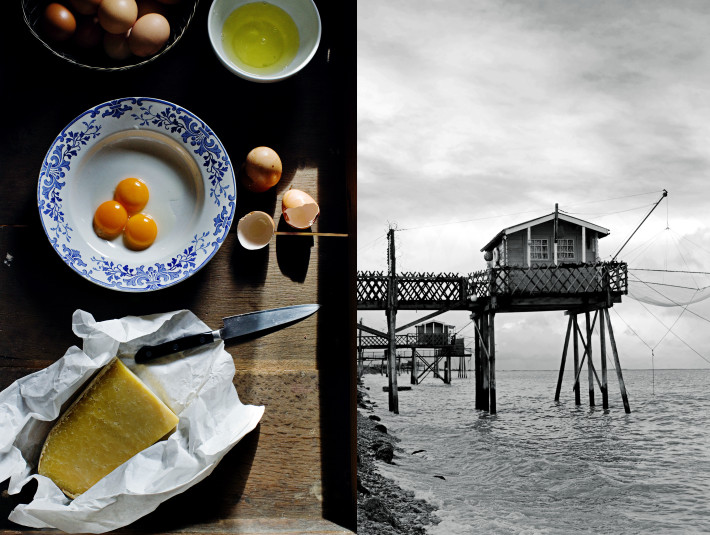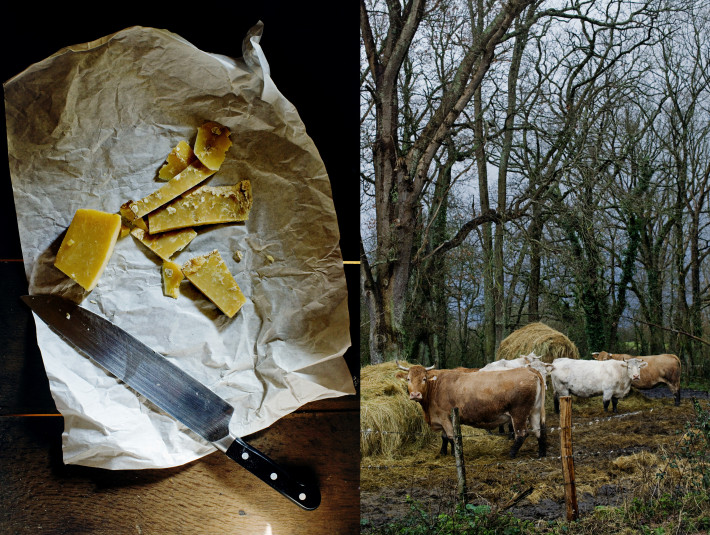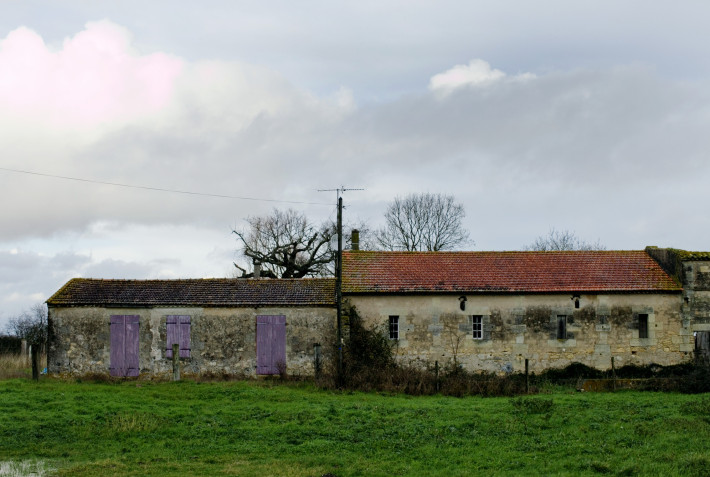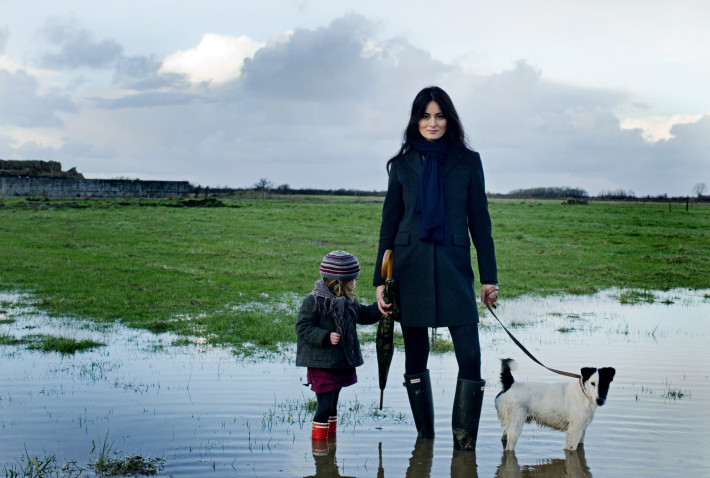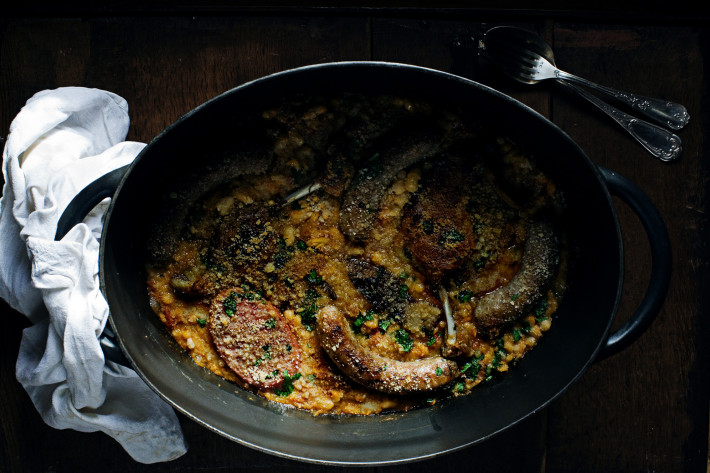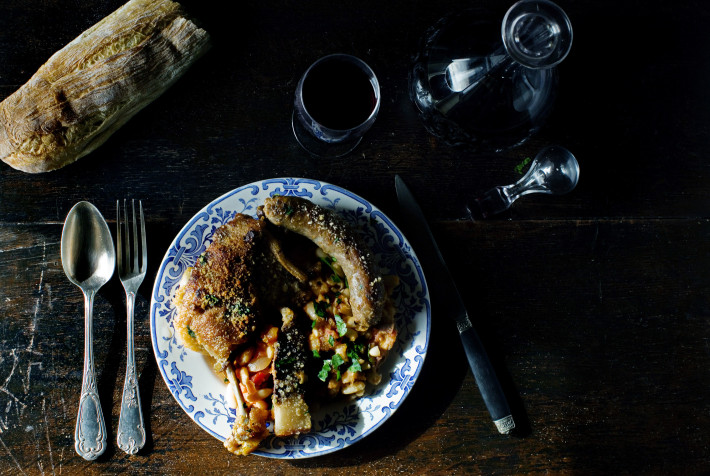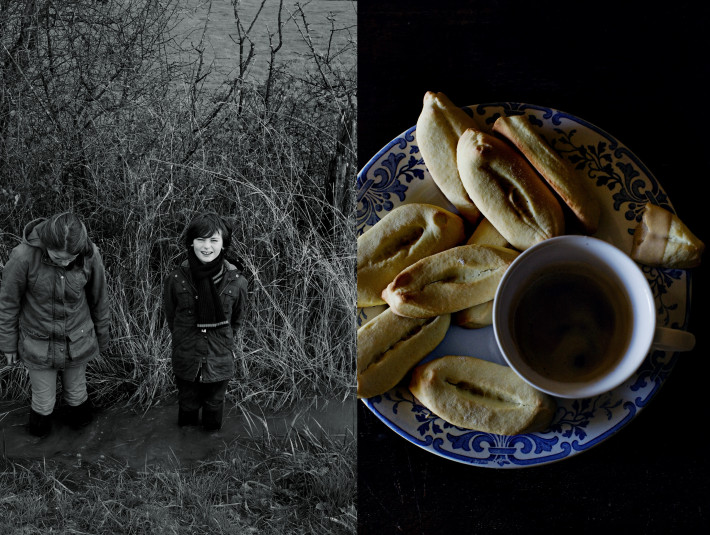The busy bees
Mrs Dalloway, Tampopo and me
Next to my bed there is a small bookshelf filled with my favorite books. The more I like them, the closer they are, and my absolute favorites are so close I hardly have to lift my head from the pillow to reach them. One of those favorites is Virginia Woolf’s Mrs Dalloway. I don’t read it very often, but once in a while I get the urge and it’s comforting to know it’s there for me, always. On Monday night, the 26th of May I felt restless and impatient, I was one day overdue (at least) in my pregnancy, I had expected the baby to come earlier, let’s just say I felt a little anxious. So I reached for Mrs Dalloway and she calmed me down. Tuesday was a beautiful sunny and warm summer day. Perhaps inspired by Clarissa Dalloway the first thing I did after I got dressed was to cut roses for the house. I cut some for every room (and we have many rooms) and filled every vase I could find. I wanted everything to be clean and shiny and beautiful. I wasn’t planning to throw a party but Mrs Dalloway had inspired me to act as if I was. Next on my list was the laundry, nothing beats the scent of freshly washed sheets drying in the sun, hanging just high enough so our little puppy, James Joyce, can’t get a hold of them, try as he might. In late afternoon when the kids came home from school I had already baked them a pear tart for goûter and was on my way to making a cherry clafoutis for dessert. Oddur kept encouraging me to take it easy, especially since I was having some contractions but it was as if I had acquired some mystical power and though I sat down from time to time I felt somehow invincible and strong.
One of my favorite films about food is a Japanese classic called Tampopo. It’s lighthearted and very funny but most of all it always makes me hungry for noodles. It has a main narrative which is broken up by several little sketches that all have to do with food. One of my favorite little stories is that of a woman who rises from her deathbed to cook her family one final meal. By evening I felt like that woman, not because I expected to die but while the sensible thing would have been to lie down and rest I still felt strong enough to cook one last meal. I chose a family favorite, what we call mafia chicken. An Italian style dish with lots of tomatoes, parmesan and rosemary, served with roast potatoes. I laid the table and went to bed. I gave Oddur instructions to carry out the meal at eight, by then we both knew something was stirring.
They served me some mafia chicken in bed and though he had to defend it with his life my dear husband managed to save me a small piece of cherry clafoutis. We discussed when to leave for the clinic. “I am not staying any longer in a stale room with plastic floors than I need” I said. Oddur sort of agreed, “It’s all up to you, we go when you are ready” he said. He doesn’t like plastic floors either. Just before ten I had a big contraction and said to Oddur “It’s time to go”. The contractions had been regular but not that regular and the experience I had from my previous four children told me we still had ample time. At this point I didn’t really feel that close but I decided to play it safe. Oddur got my suitcase in the car, locked up the dogs and gave instructions to the kids who were all washed and dressed in their pyjamas but couldn’t sleep (adorable looking I might add). While he was doing this something big happened, one more contraction but a serious one and I felt I couldn’t move after that. Oddur insisted, quite firmly, “I’ll carry you to the car”. “I’m not moving, and I mean it” I howled back like a wolf. He had a look on his face that implied that he was considering taking me into the car against my will. Then he thought better of it and called the emergency services who advised against moving me at this stage. Did I say the water broke?
While the doctors and firemen were hurriedly on their way the two of us just brought the baby into this world as naturally and effortlessly as people have been doing for thousands of years in their own homes. For a brief moment I got slightly worried but when he placed that little girl on my chest I knew everything would be fine. Those few precious minutes that followed were pure magic and a privilege to live through them. She was so precious, so perfect, a rosy colored baby that came into the world through a room full of roses. Then the show started. I don’t think my bedroom has ever drawn a bigger crowd, doctors, firemen with heatblankets and endless gadgets, my father-in-law on the road guiding them with a flashlight (one that he bought in case of emergency – he likes to think ahead, a trait I might add that has not been passed on to his son).
We called her Audrey May.
When the cat is away … the mice cook!
In France a father has to go to the local townhall and declare a baby’s birth. Our little commune has no hospital and therefore hardly any births, perhaps one a year. So the officials are a little rusty when it comes to issuing birth certificates. At the clinic Oddur entertained me with the story of his encounter with an official at the mairie (townhall). The thought of having to deal with a birth was already a big task for her but when she realized that the baby’s surname would, due to Icelandic traditions, be derived from the father’s first name and not his surname, she just threw up her hands and made a lot of oh lah lah’s and ce n’est pas normal!. Calls were made, papers were ruffled, but like our other daughters she finally ended up Oddsdóttir (the daughter of Oddur).
It gave me great joy to learn that while I was at the clinic my husband, with the help of the children, cooked almost exclusively from my new cookbook, “A kitchen in France”. We recently received a mock up/galley of the book and while it’s in black and white it feels great to have it on the shelf, next to all my favorite cookbook authors. They went for all the “manly” dishes in the book. Entrecôte à la Bordelaise, veal liver, à la Bordelaise, rustic potatoes with onion and duck breasts grilled over vine sarments. I am happy to report that they all worked out and to quote Louise (almost) as if mom had cooked them. Every recipe has been tried and tested, every text read and re-read but then, when it’s out of your hands, at the printers, you start to worry if there are any mistakes. According to this random selection, it’s all good.
The scent of strawberries and honey
My family picked me up at the clinic after a trip to the market on a glorious Saturday morning. Audrey and I had gotten up early and sat in our little outfits by the window at the hospital waiting to see the world. They brought us home in a car perfumed by basil and placed us in that familiar bed with freshly washed (again as you can imagine) sheets and more roses from the garden. I promised to take it easy, I did not. By evening I was cooking up a pepper steak and spinach, hospital food leaves a lot to be desired and all the wonderful dinners they had been having in my absence stirred my food envy.
Audrey is a good baby and, knock on wood, sleeps through the night (elle fait ses nuits as we say here in France). She’s already been to an important meeting regarding our new house and last Friday she had a big outing with her parents and her big sister Gaïa (I can’t believe that little girl, the so-called “our last child ever” is now a big sister). Our first stop was at a honey farm less than a mile from our house. We had often seen a simple sign at the turn of the road that simply read “MIEL” (honey). We had inquired in May about the miel but were told to return in June when the bees had done a bit more work. This honey farm is a little paradise, a handsome stone house, surrounded by forests and meadows with a beautiful manicured rose garden, an orchard and the loveliest cherry trees. Though officially retired the beekeeper, Bernard Seguin and his wife Liliane are every bit as busy as the bees, keeping a garden this pretty requires a lot of work and they say it keeps them young and fit. The honey tastes delicious, a mixture of all the various flowers found in the garden, a bit of acacia, blackthorn, a hint of cherry, a tiny bit of roses, a mix of everything local. It’s a small production and not their livelihood but Bernard says it allows him to meet people and chat and he is a man of many opinions judging from our brief encounter. A former chemist, with a passion for collecting ancient coins and fearless amongst the bees, his favorite band to this day are the Doors, probably he says, because those were his halcyon days. They are a wonderful, interesting couple, Bernard and Liliane, with the most beautiful, thick grey hair. It must be all that honey. We bought a kilo’s worth at the cost of 9 euros, not a penny more not a penny less.
One of my favorite memories of last summer are the moments I spent at the Arnould’s strawberry farm near St. Vivien de Médoc. Strawberries really taste better in the moments after they are picked, and no matter how fresh you get them at the market, a tiny bit of flavor will already be lost. I had breastfed Hudson as an infant at Strawberry Fields in Central Park, now I would take Audrey to a real strawberry field, with actual strawberries. When we arrived the clouds were winning their battle with the sun, it was still hot but the breeze was gathering force. Caroline was delighted to hold Audrey while Gaïa and I picked a handful of strawberries before it was time to pick up the big kids from school.
It may be a far-fetched thought, and Audrey is certainly still very little. But a part of me believes that one day she’ll be standing in a field of strawberries, the wind blowing in her hair and filling her nose with the sweet scent of fresh strawberries and she will think “I don’t know why, but this feels strangely familiar”. The seeds of her first déjà-vu are already in place.
You are never too young to pick strawberries.
ps: The Arnould family have 4 gîtes located in St Vivien de Médoc (basic fully-equipped rooms with kitchen/pool/max 6 people) and there are still availabilties in July. The prices range between 390-490€ for the whole week! Click here for more information.
Recipes
Seared or sarment-smoked magrets de canard (duck breasts) are amongst our favorite family meals. I love to partner this versatile meat with something sweet, like peaches or pears, as well the the classic French side dish potatoes Sarladaises. I usually start cooking the duck at the same time as the potatoes Sarladaises, so I can use the rendered duck fat immediately. And when you add the peaches, pear and cherry tian, you end up with a lovely embellished dish fit for any occasion.
Duck breasts with honey & balsamic vinegar
Serves 4 (a generous 4)
3-4 magrets de canard/ duck breasts 350-450g/ 3/4 to 1 pound each
5 tablespoons honey
5 tablespoons balsamic vinegar
Fleur de sel & freshly ground black pepper
For the duck
Score the magret duck breasts on the fatty side using a sharp knife, cutting in a cross hatch pattern (making the cross-hatches about an inch across). Season the magret duck breasts with salt, and place them on a pan, fatty side down. Heat the pan to medium. Cook the breast until the skin is crispy and most of the fat has rendered, about 15 minutes, depending on thickness of breast. Pour off the fat from the pan frequently and reserve in a bowl. It’s best to have the meat on the rosé side. Turn magret breast over, and cook for 5 minutes. Leave to rest for a few minutes, and slice breast into slim slices. Set aside on an oven-proof plate and keep warm in the oven (90°C/200F) while you make the sauce.
Keep 2 tablespoons of duck fat in the pan, add the honey and balsamic vinegar and stir gently. Cook for 30 second on a medium heat (or the sauce will caramelize very quickly), add the juices from the duck and pour in a serving dish.
Serve with the potatoes Sarladaises.
Sarladaises potatoes
900 g/ 2 pounds new potatoes
3-4 cloves garlic, sliced finely
6-8 tablespoons duck fat (use the duck fat rendered from the duck magrets/fillets)
A small bunch of parsley, leaves picked
Fleur de sel & freshly ground black pepper
Slice the potatoes in rondelles, chop the parsley and slice the garlic cloves thinly.
In a large sauté pan, heat the duck fat (on a medium heat), add the potatoes and stir gently for 10 to 12 minutes. When the potatoes start to be golden, season with salt and pepper.
Lower the heat and continue to cook for 15 minutes, or until the potatoes are cooked and tender. Add the garlic and parsley towards the end. Serve immediately.
Cherry, peach & pear tian
Per person: 1 pear, 1 peach and 6 cherries. A few sprigs of rosemary & one tablespoon honey. You will need a small recipient (I use a round ramekin) for individual portions.
Preheat the oven to 180°C/350F
Peel and slice the pear and peach. Slice finely into small rondelles (round slices). Align the slices alternating with each fruit, and place cherries on each side (see picture). Place the sprigs of rosemary on top and drizzle with the honey. Cook in the oven for 20 to 25 minutes. Serve as a side dish with the duck and potatoes.
Summer strawberries are irresistible, and I can’t think of a better dessert than a lovely strawberry tart to serve your guests. The lemon flavored crème patissière is light yet creamy with a little twist and I love throwing a refreshing handful of mint leaves to decorate the tart. Enjoy!
Strawberry tart
1 pack strawberries/ 450 g approx.
2 tablespoons redcurrant jelly/gelée de groseille
A handful of mint leaves
For the shortcrust pastry
125 g/ 1 cup plain flour
75 g/ 1/3 cup butter (softened at room temperature)
15 g/ 2 tablespoons sugar
30 g icing/ 4 tablespoons confectioner’s sugar (sifted)
40 g/ 1/4 cup ground almonds
1/2 egg
1/2 pinch of salt
1) In a large bowl, mix all the ingredients together until the mixture forms a soft dough. Shape into a ball, wrap in cling film and place in the refrigerator for at least 1 hour.
2) On a floured parchment covered surface, roll out the dough to fit the tart pan. Line the tart pan & gently press the edges of the pastry against the interior of the tart pan and prick the base with a fork. Use a piece of leftover dough to press down the edges (this trick will prevent any over-stretching or finger marks).
3) Cover with cling film and place in the freezer for a least 30 minutes (the longer the better). This is a good trick to prevent shrinking.
4) Cut out a piece of parchment paper and line the bottom of the tart. Place beans/marbles/any oven proof weight and blind bake in a preheated oven 180°C/ 350°F for 15 minutes. Remove weight and parchment paper and bake for a further 5 to 8 minutes, or until slightly golden. Set aside and leave to cool for at least 20 minutes before unmoulding.
For the lemon crème patissière
240 ml/1 cup whole milk
120 g granulated sugar
3 egg yolks + 1 egg
1 vanilla pod, split lengthwise, beans scraped or 2 tsp vanilla extract
The zest of 2 lemons
150 ml/2/3 cup heavy cream
Juice of 1 lemon
30 g/1/4 cup plain flour
In a large bowl, whisk the sugar, eggs and flour until light and fluffy, about 8 minutes. Add the lemon zest and lemon juice.
Place the milk, cream and vanilla seeds in a large saucepan and bring to a soft simmer. Gently pour the warm mixture into the egg bowl, whisking continuously and return the mixture to the saucepan. Continue to whisk on a low heat, until the mixture thickens to a custard. Pour into a bowl and cover with baking paper directly on top of mixture. Leave to cool completely and place into the refrigerator until ready to serve.
Spoon the crème patissière into the tart and smooth with a spatula.
Place the strawberries on the tart (see picture), starting from the edge in a circular pattern.
Heat the redcurrant jelly and 1 tablespoon water. Leave to cool and brush the strawberries with the mixture for a glossy and sweet glaze. Decorate the tart with the mint leaves.

